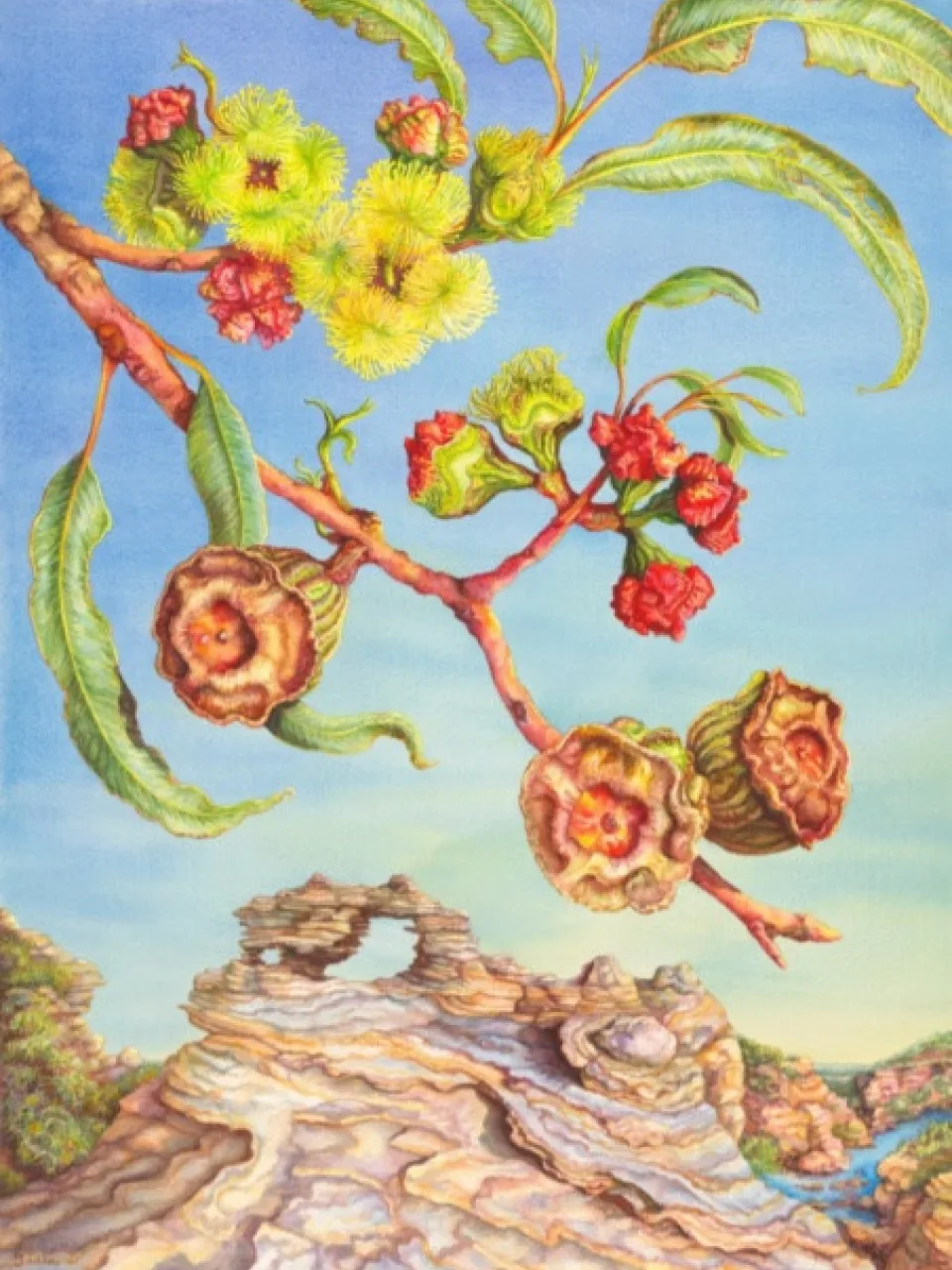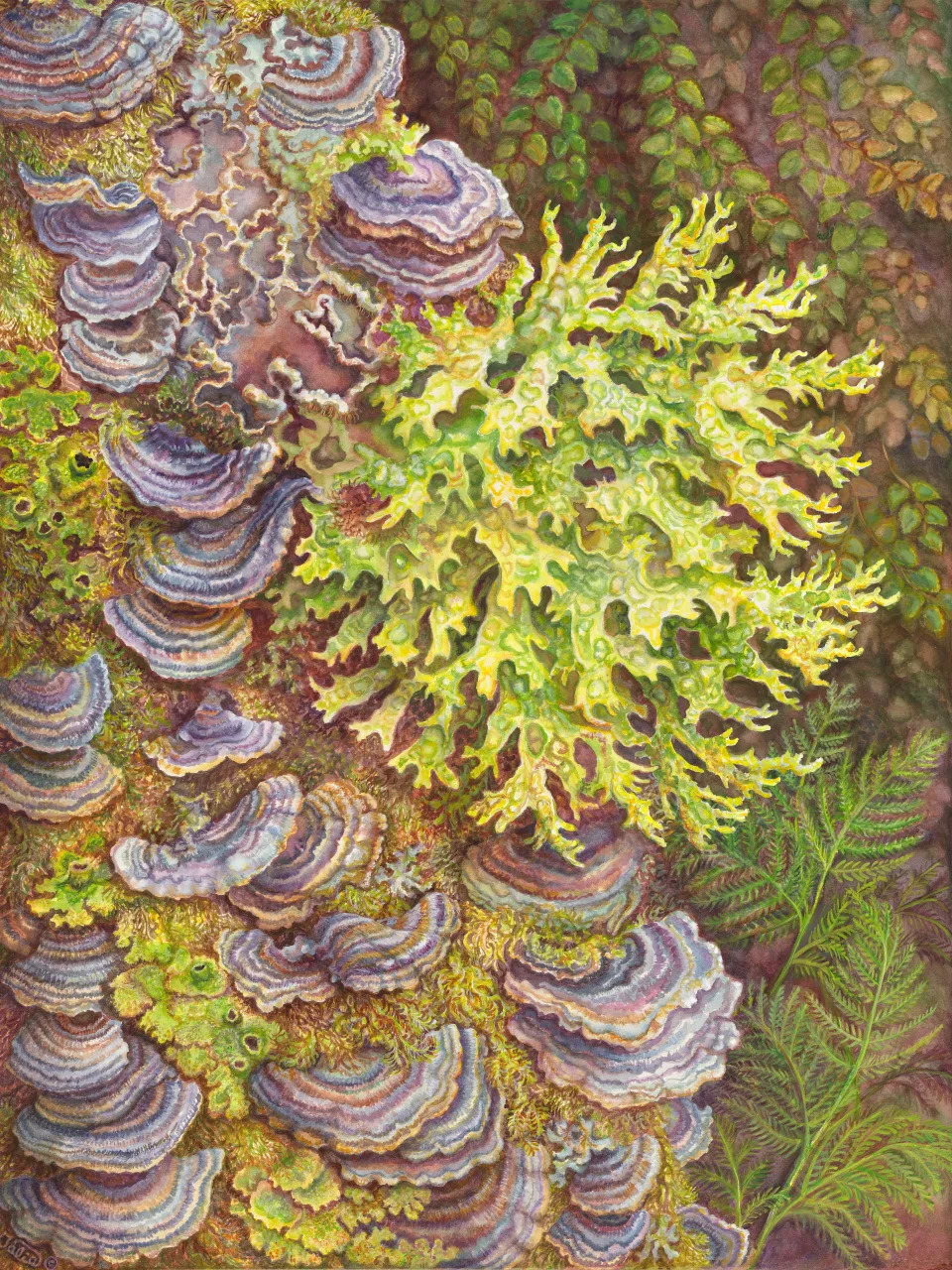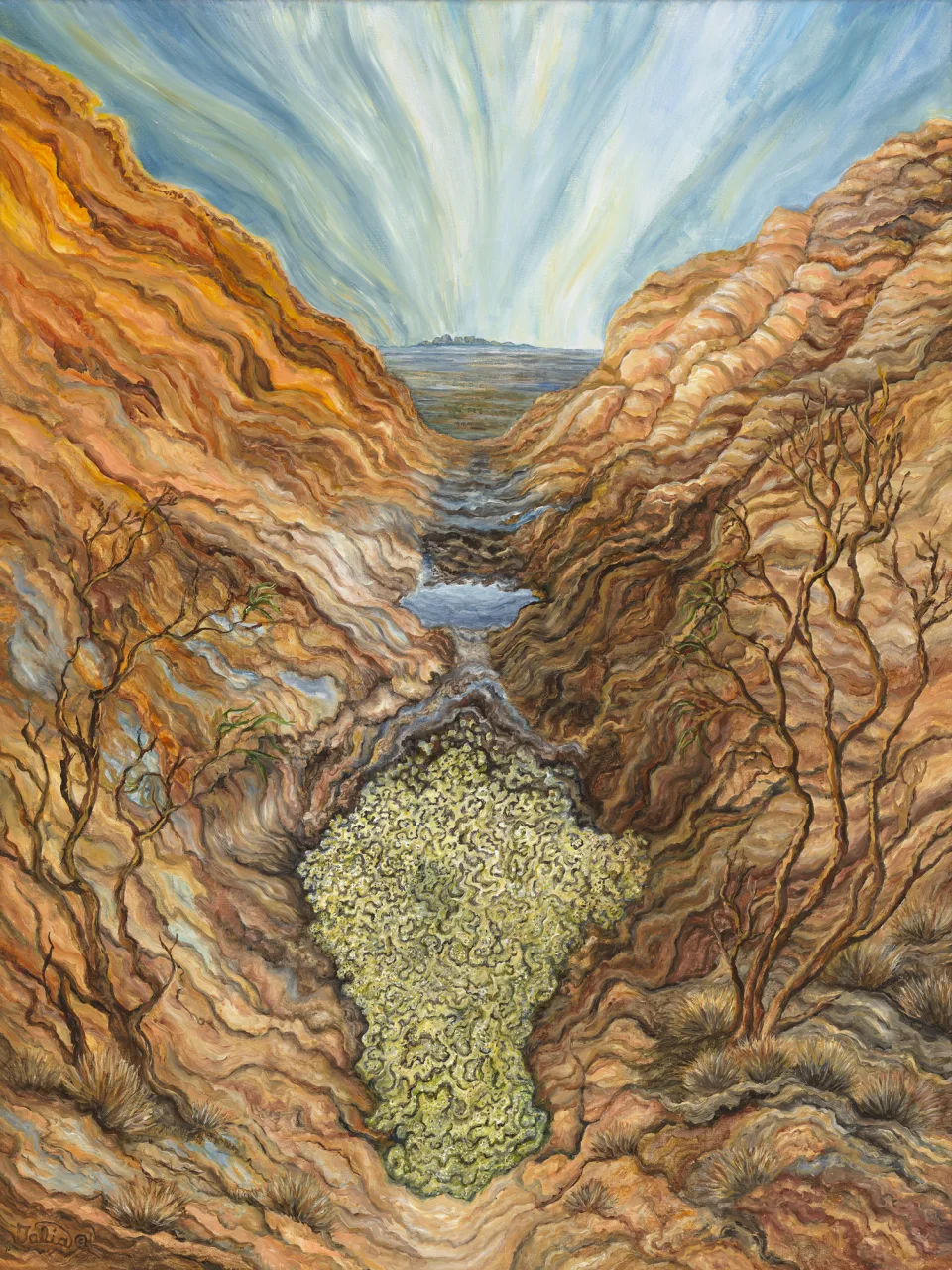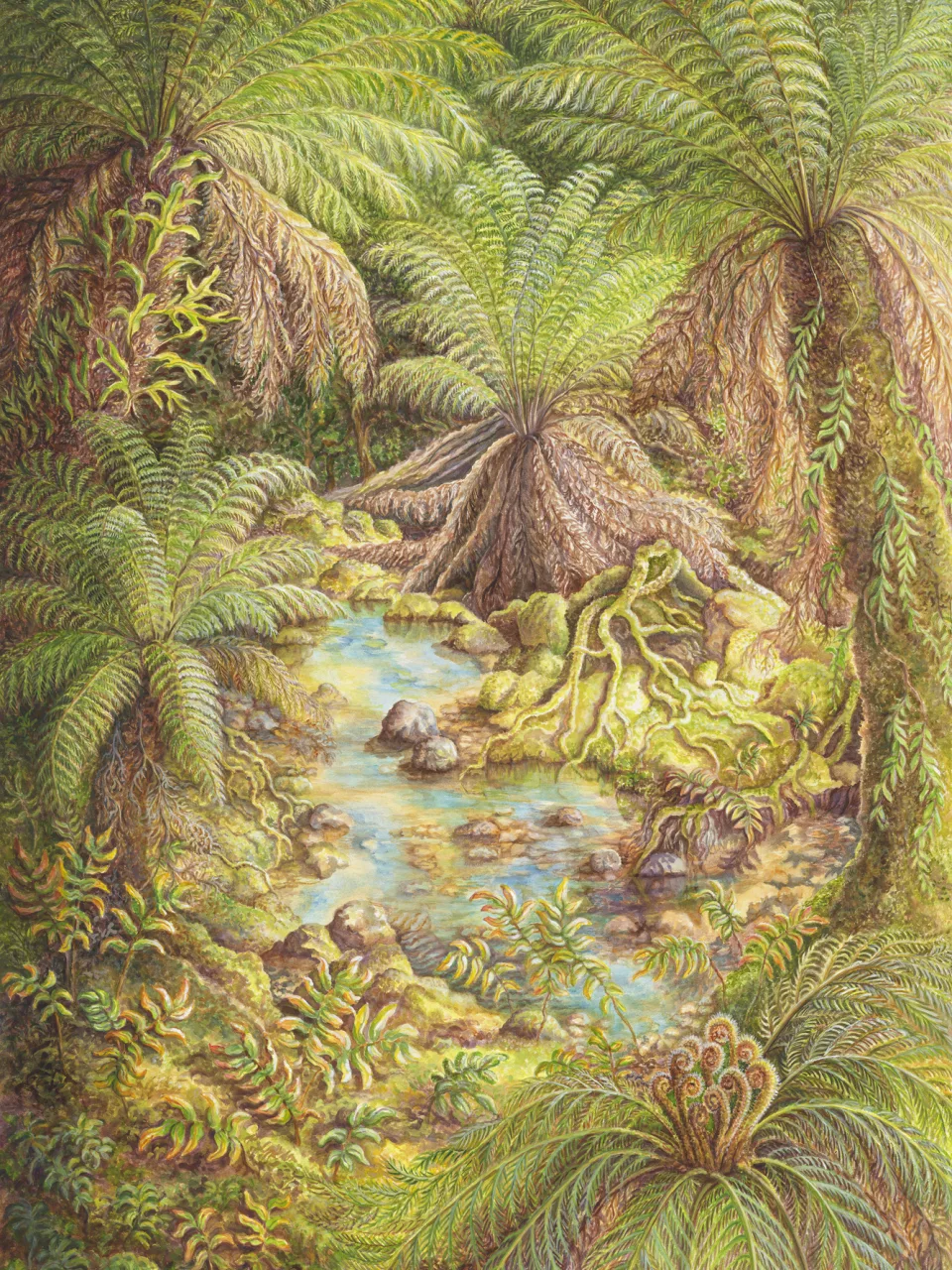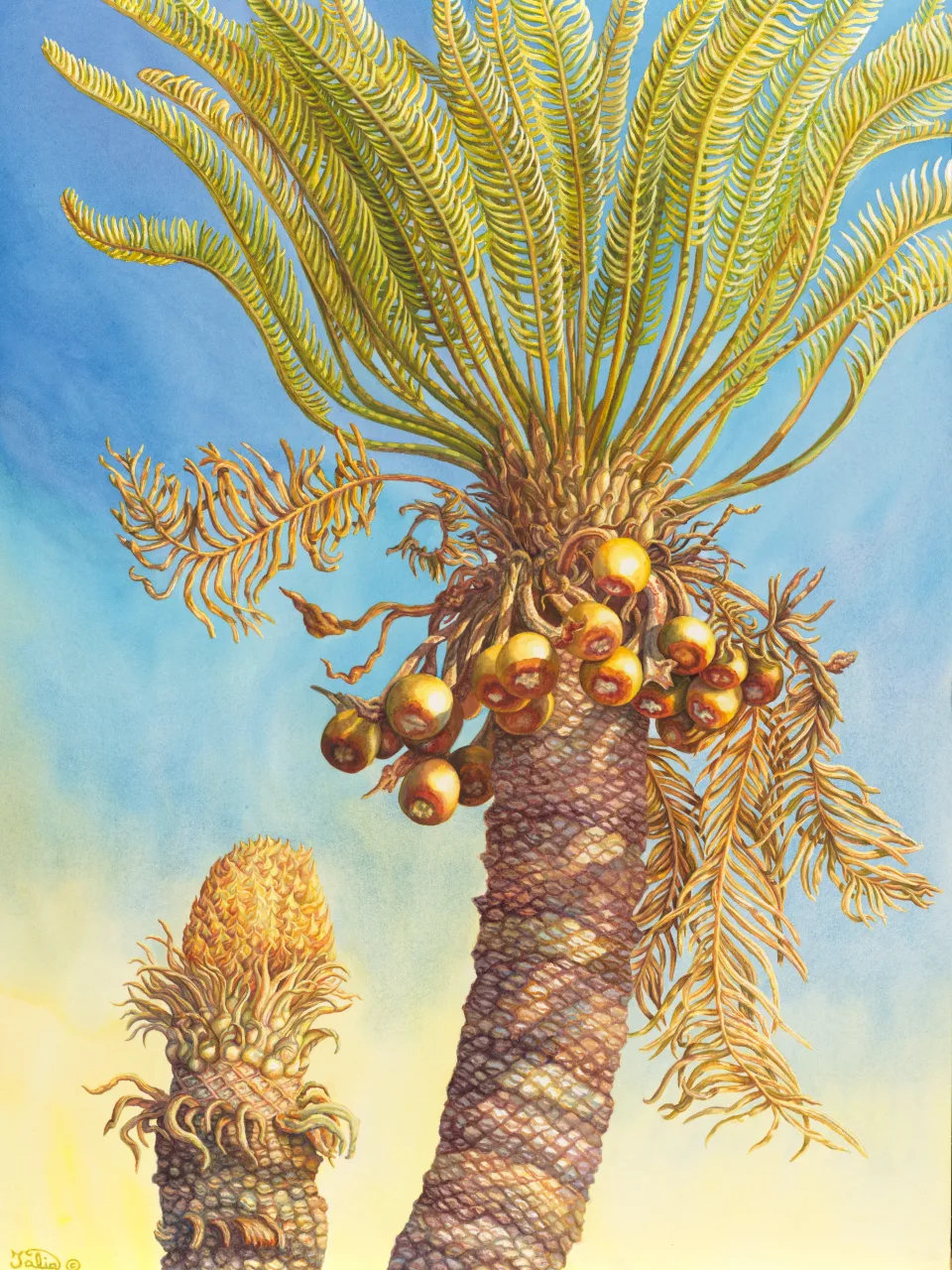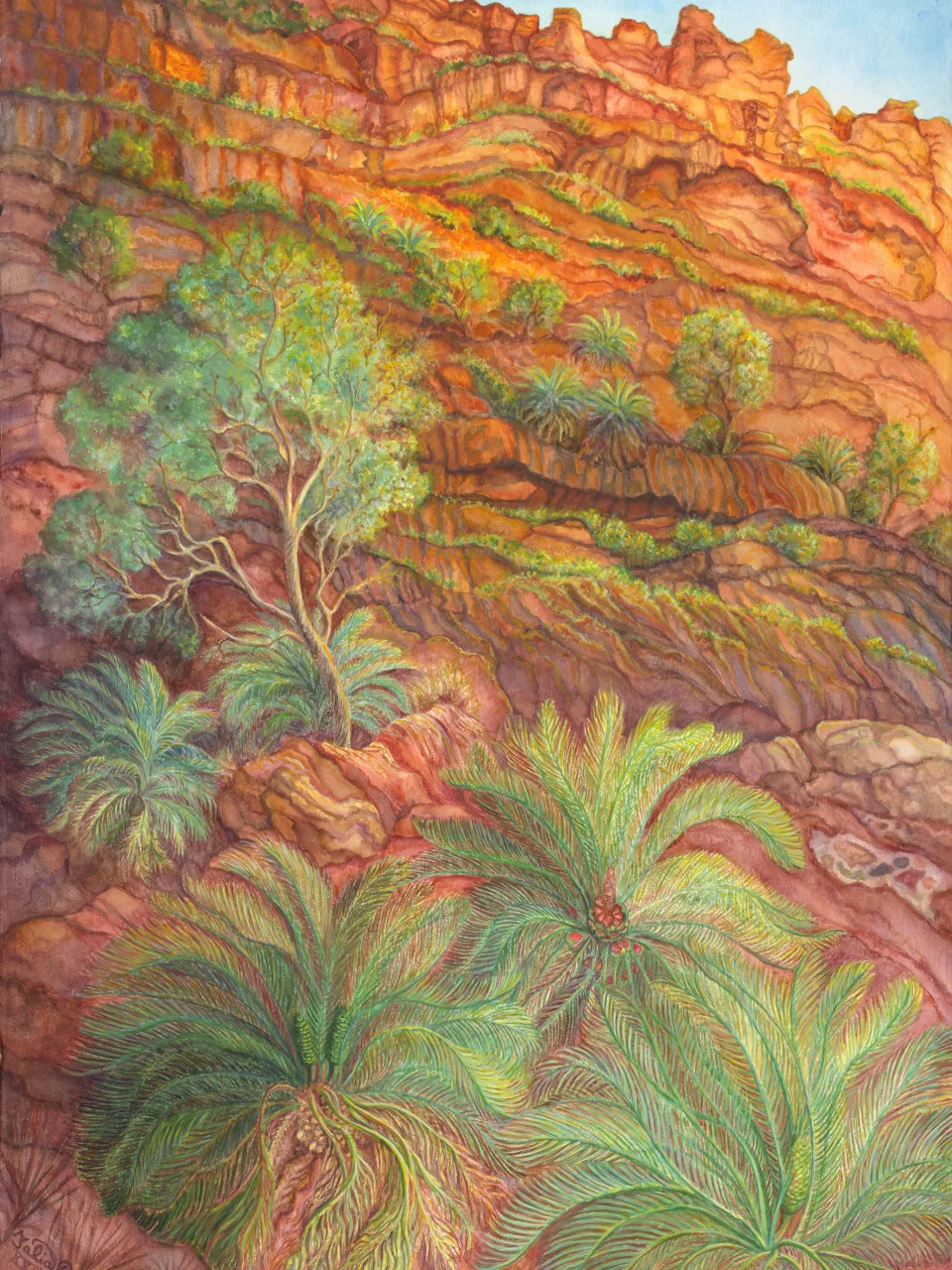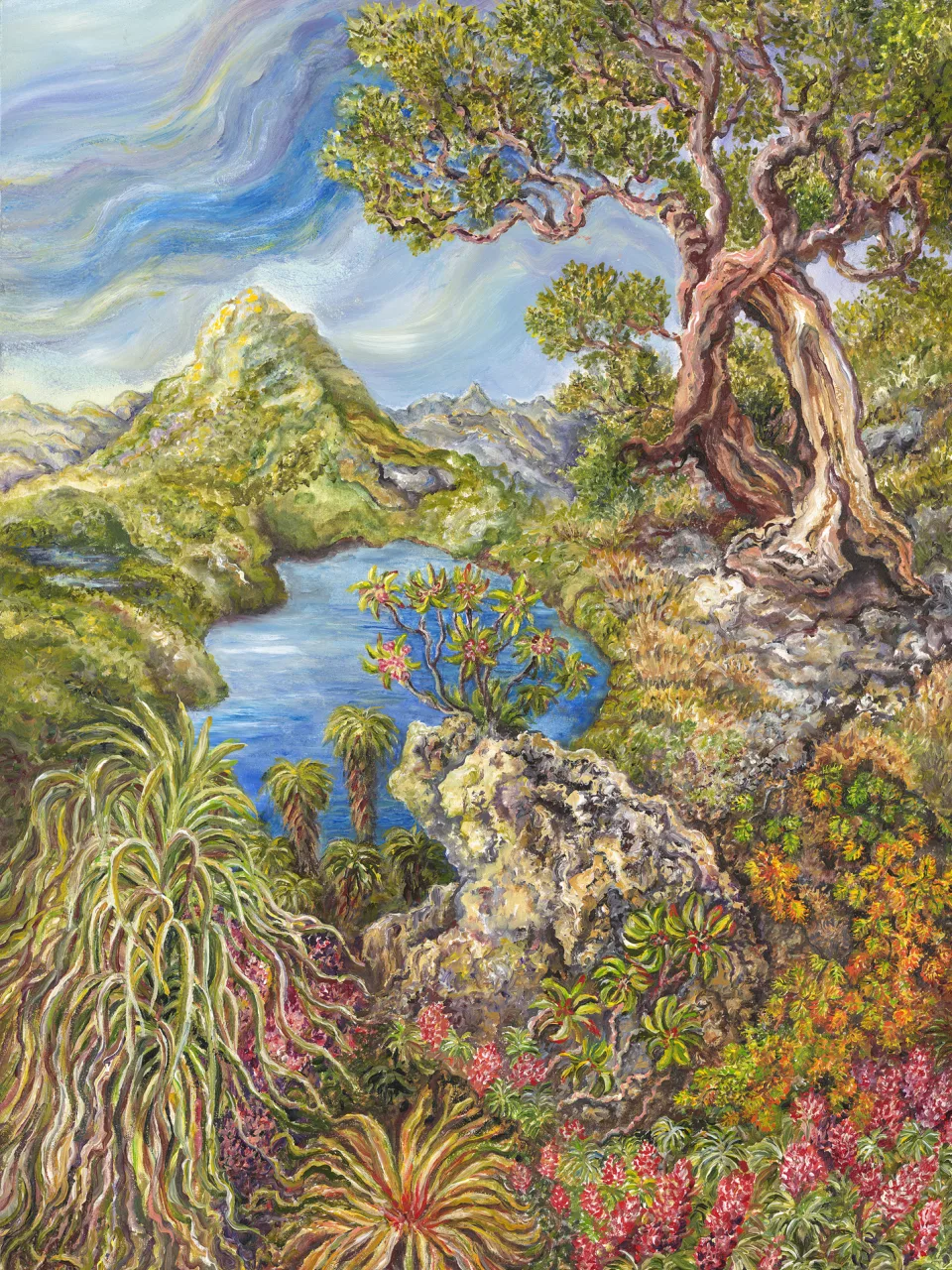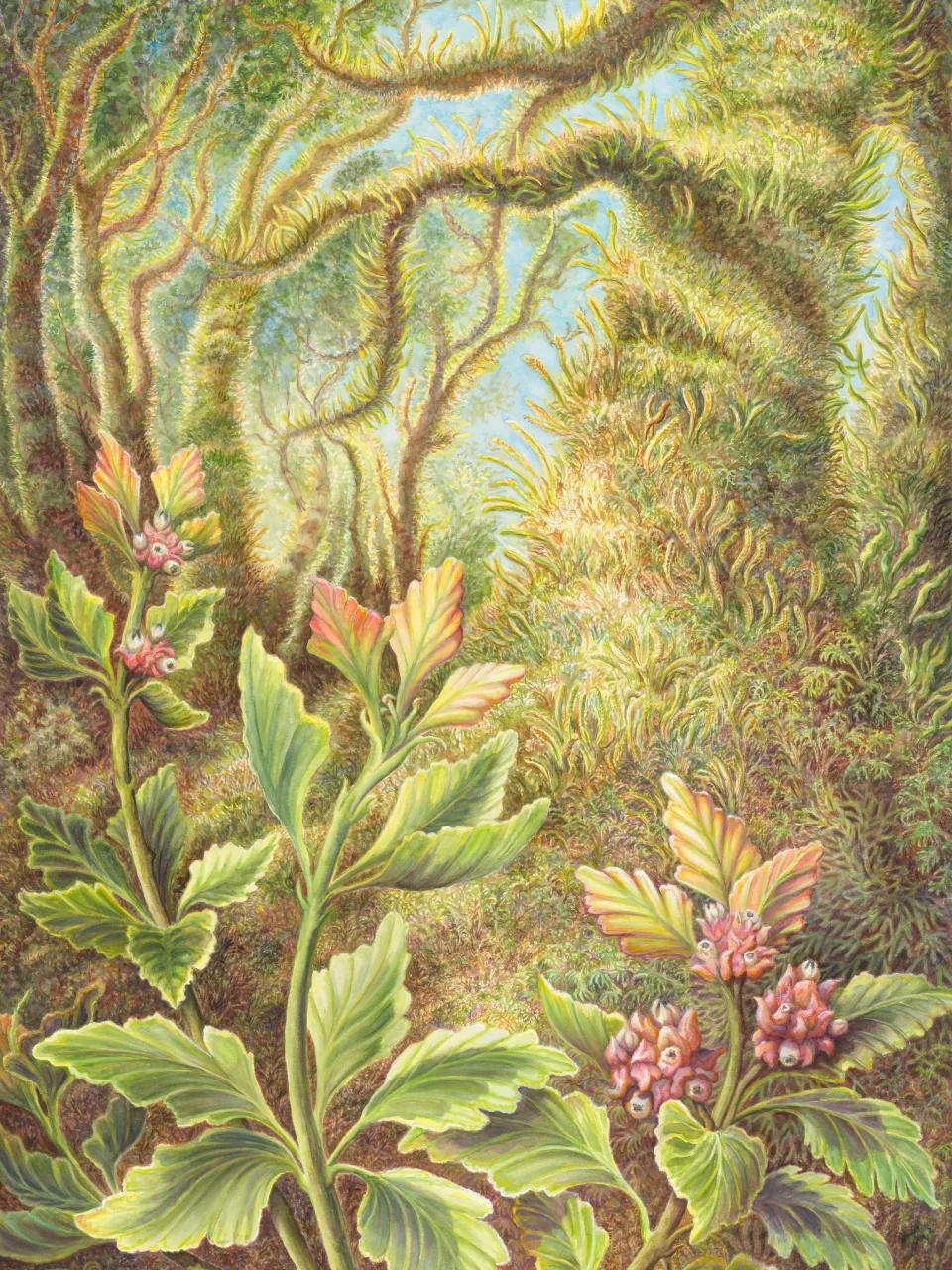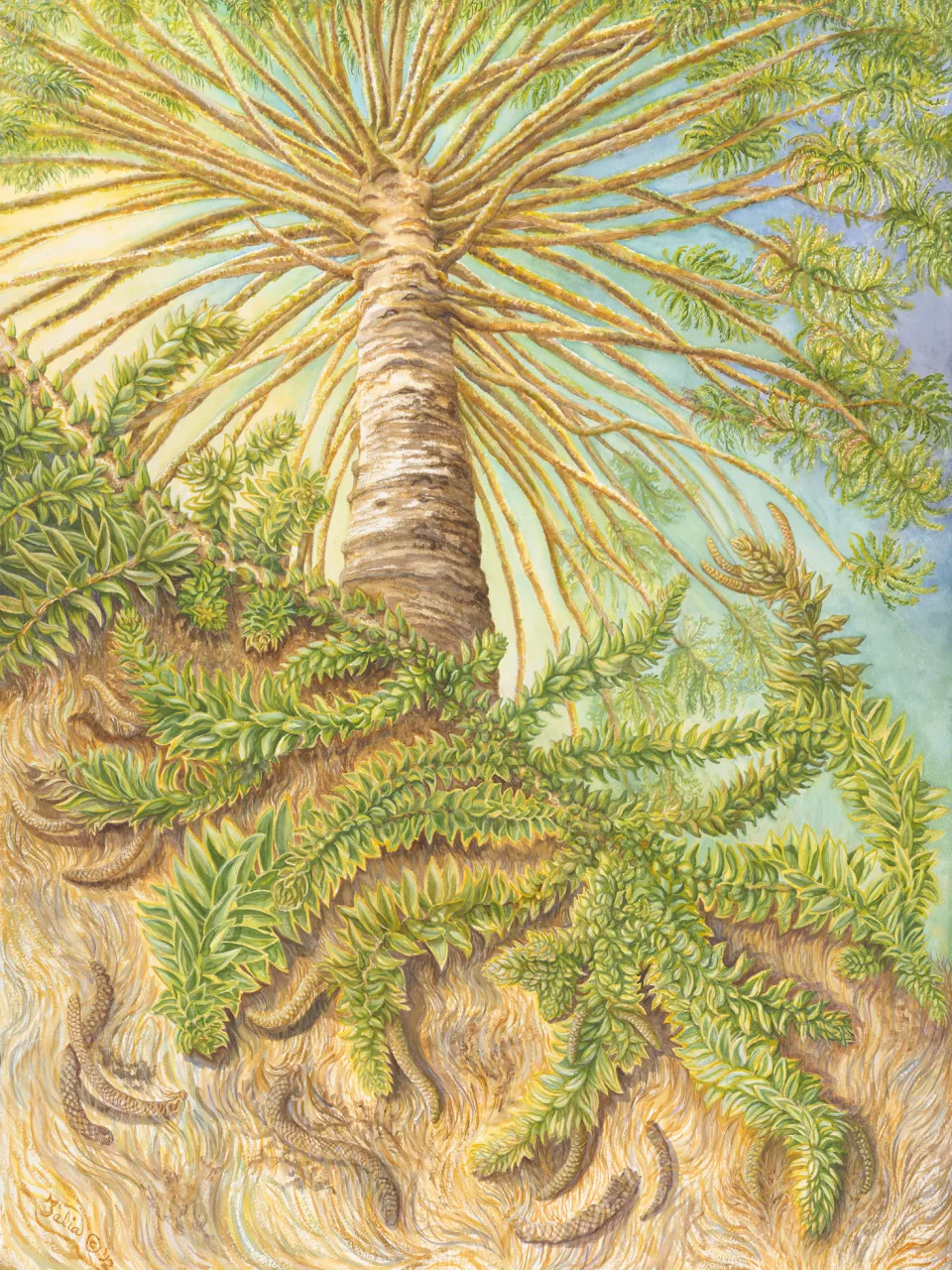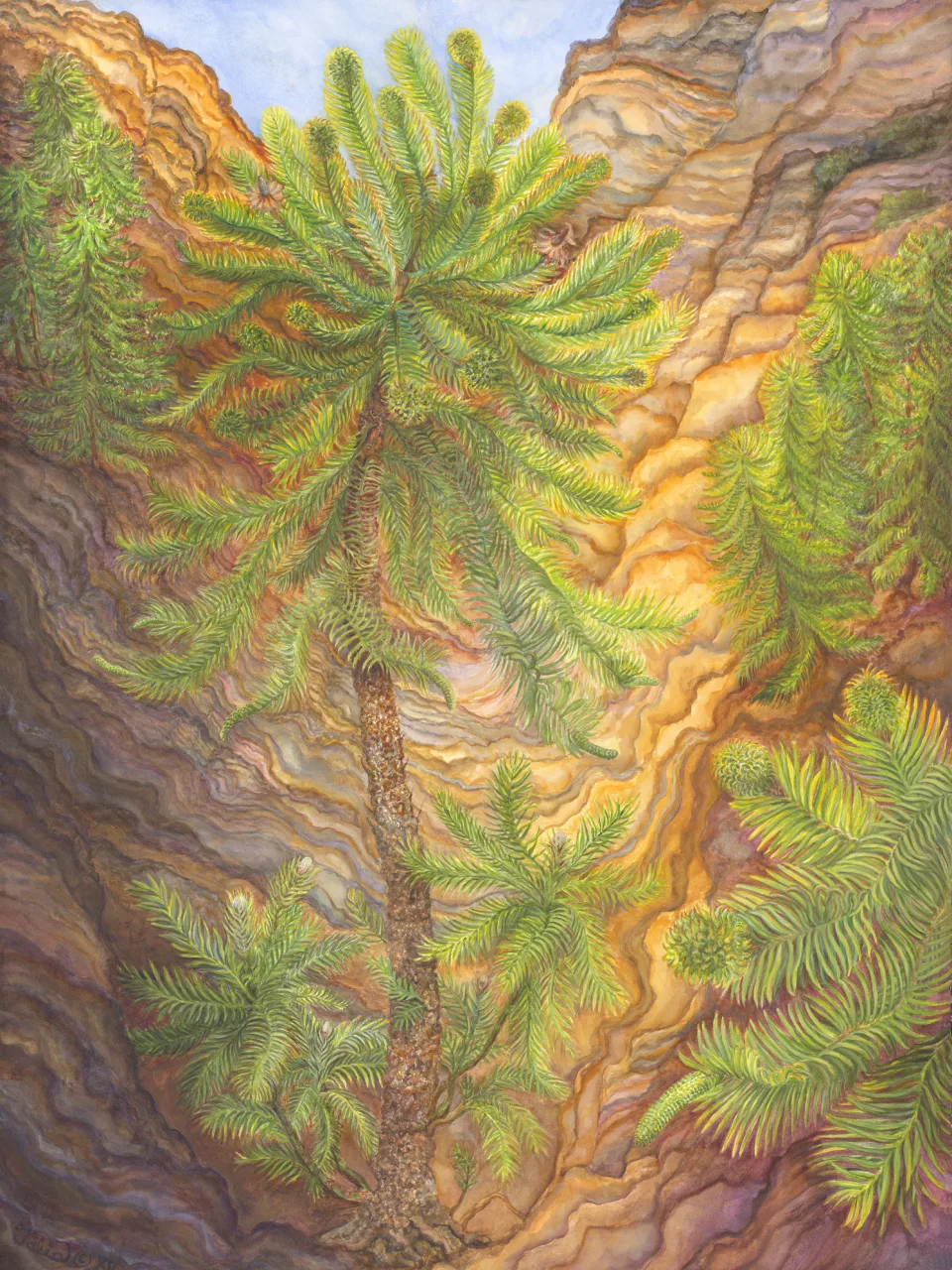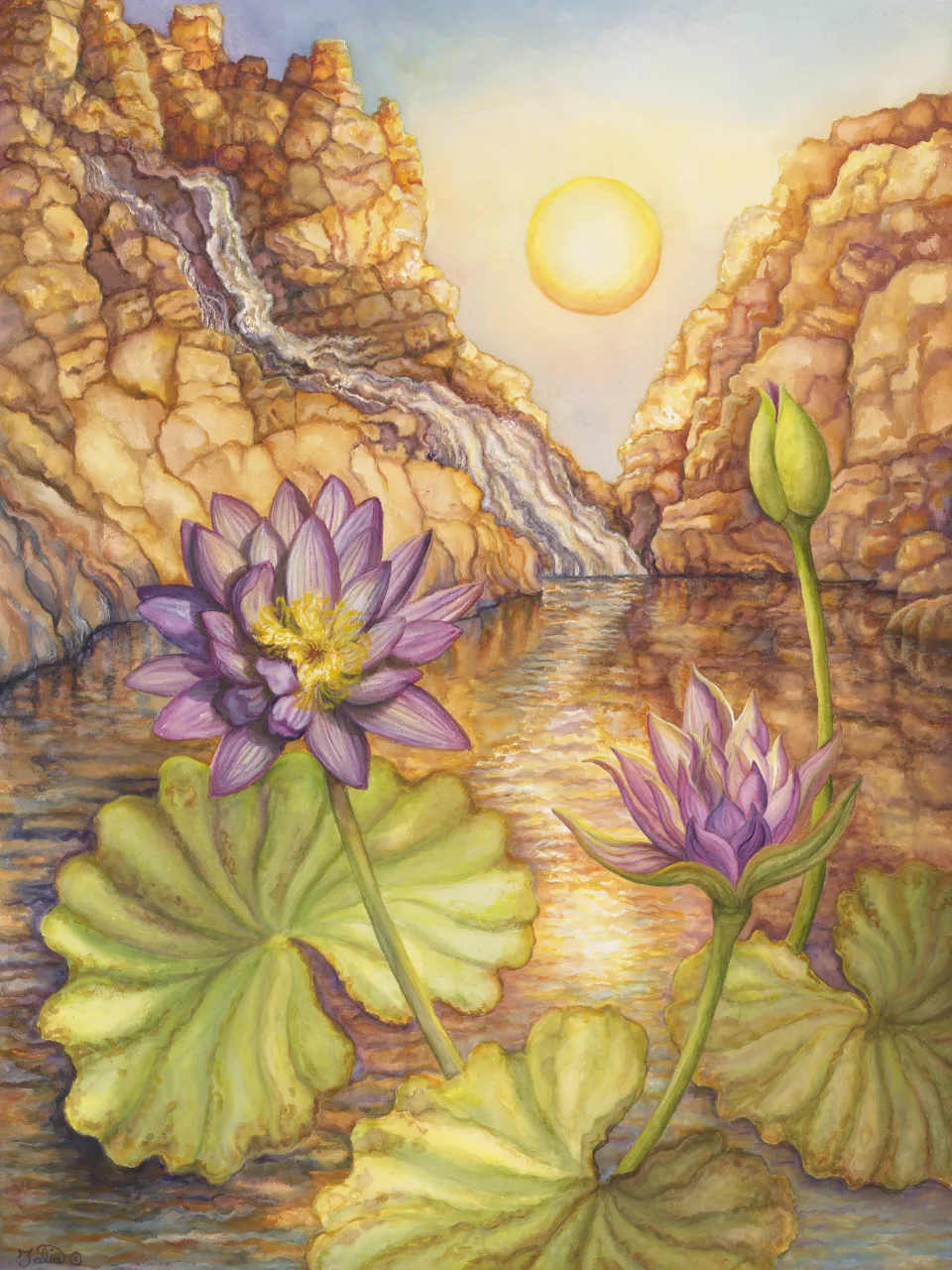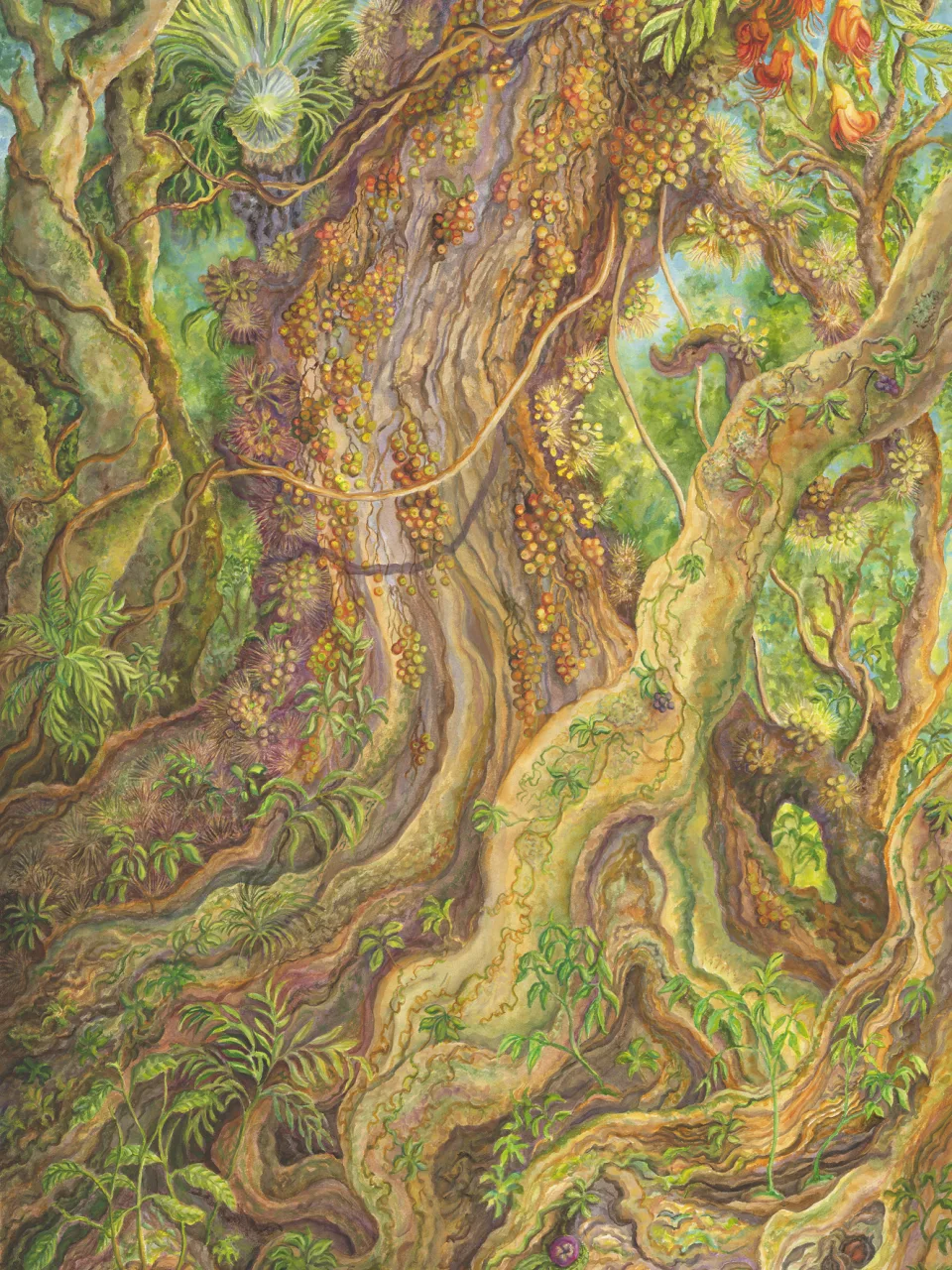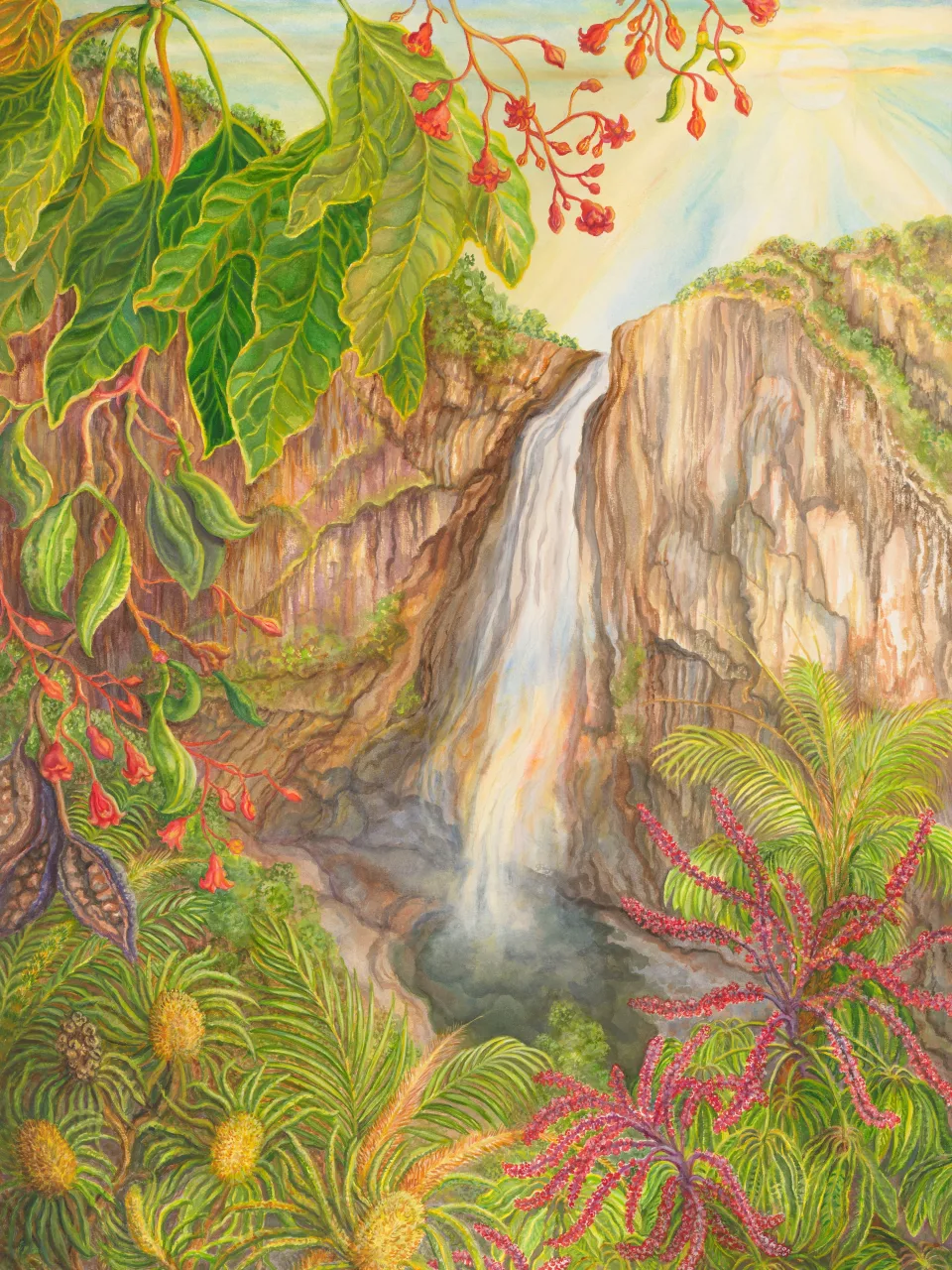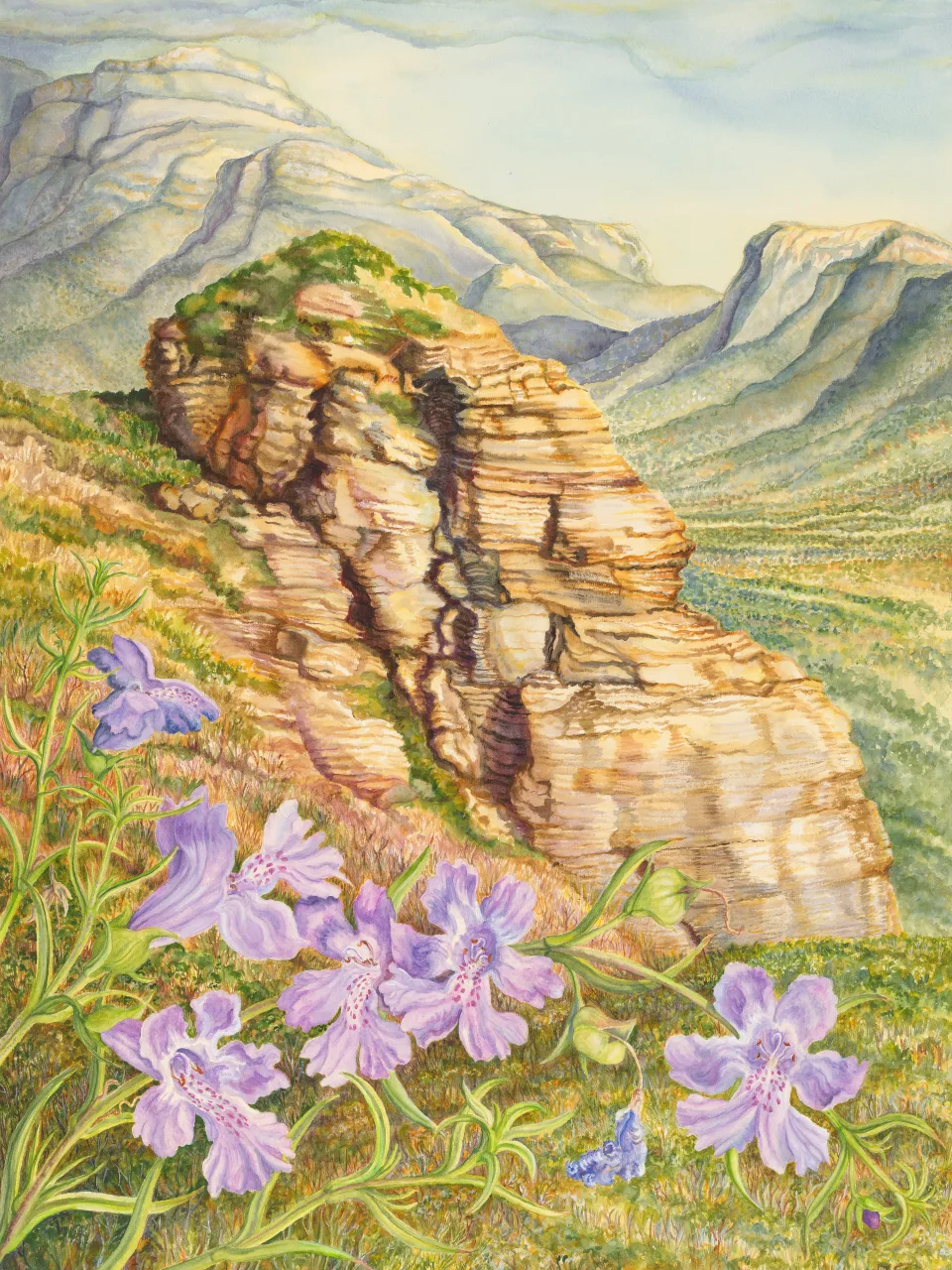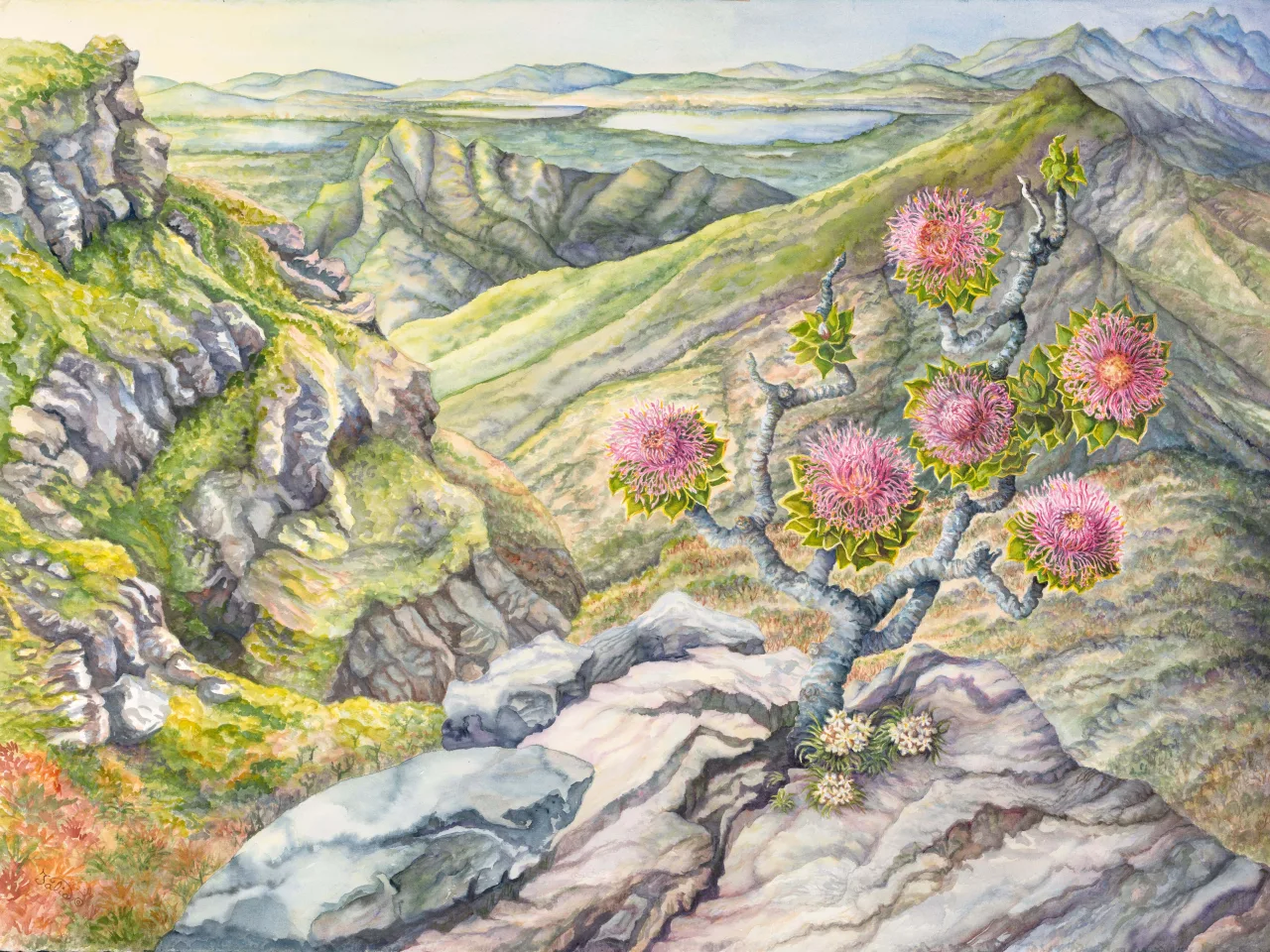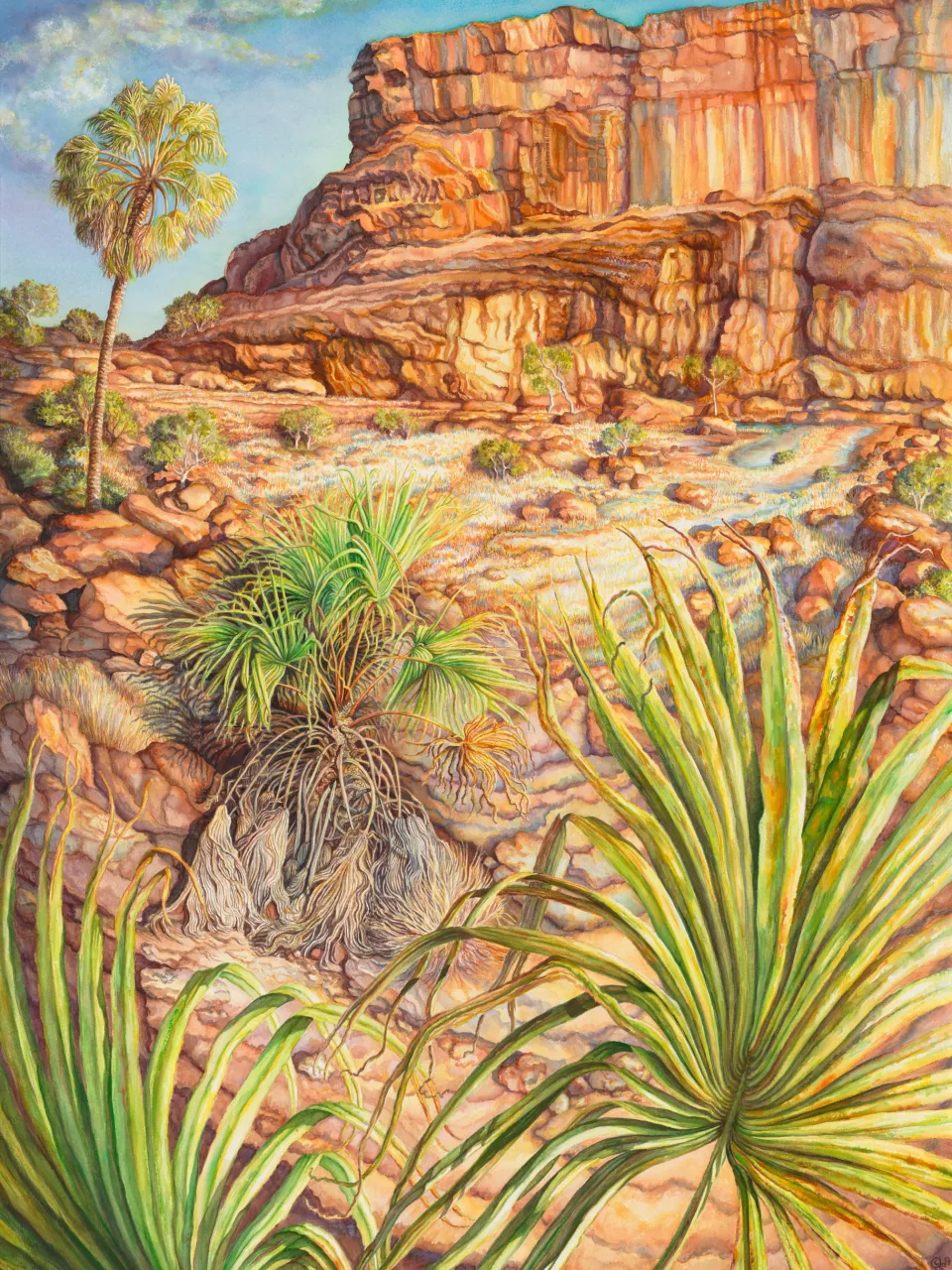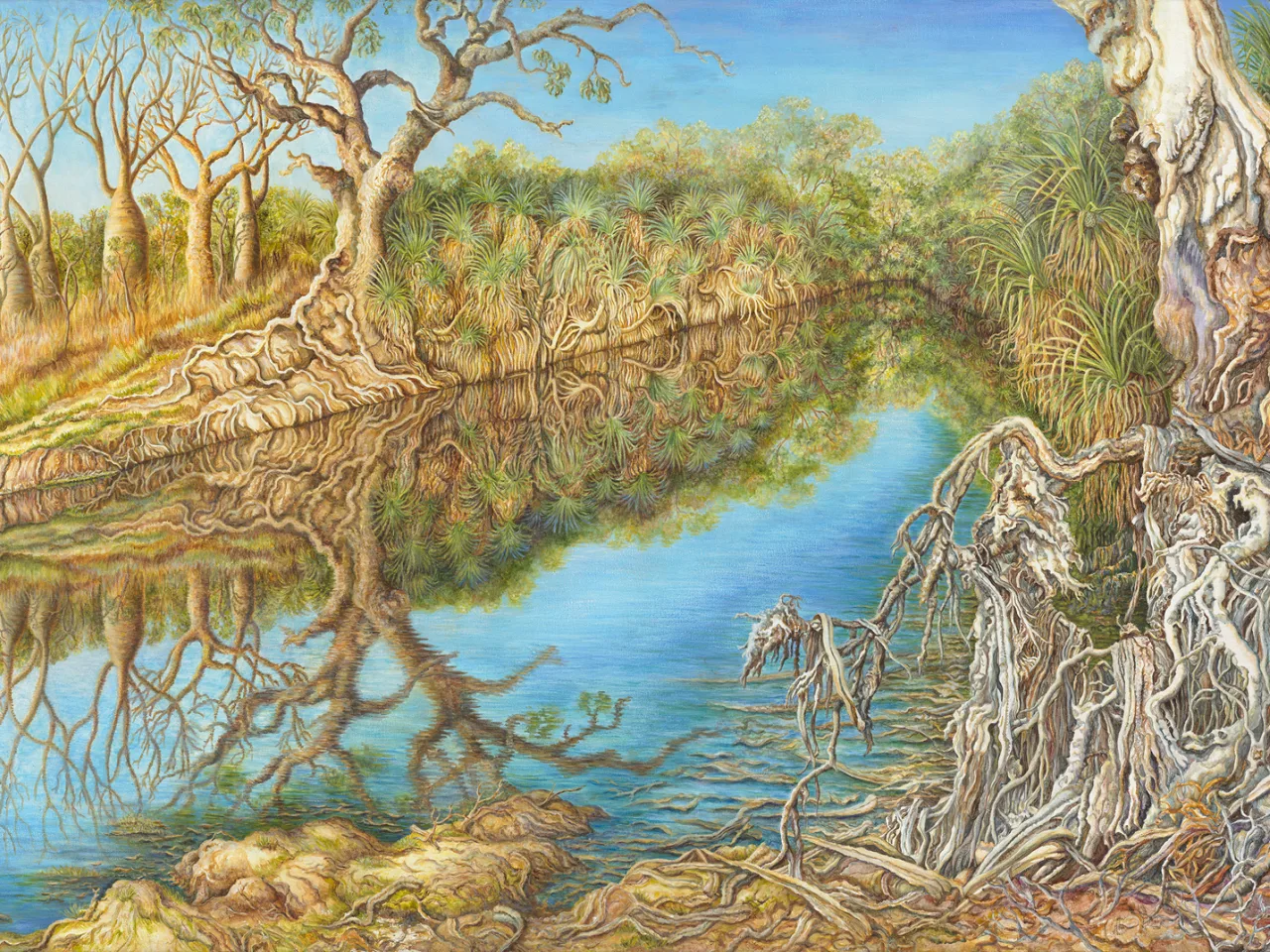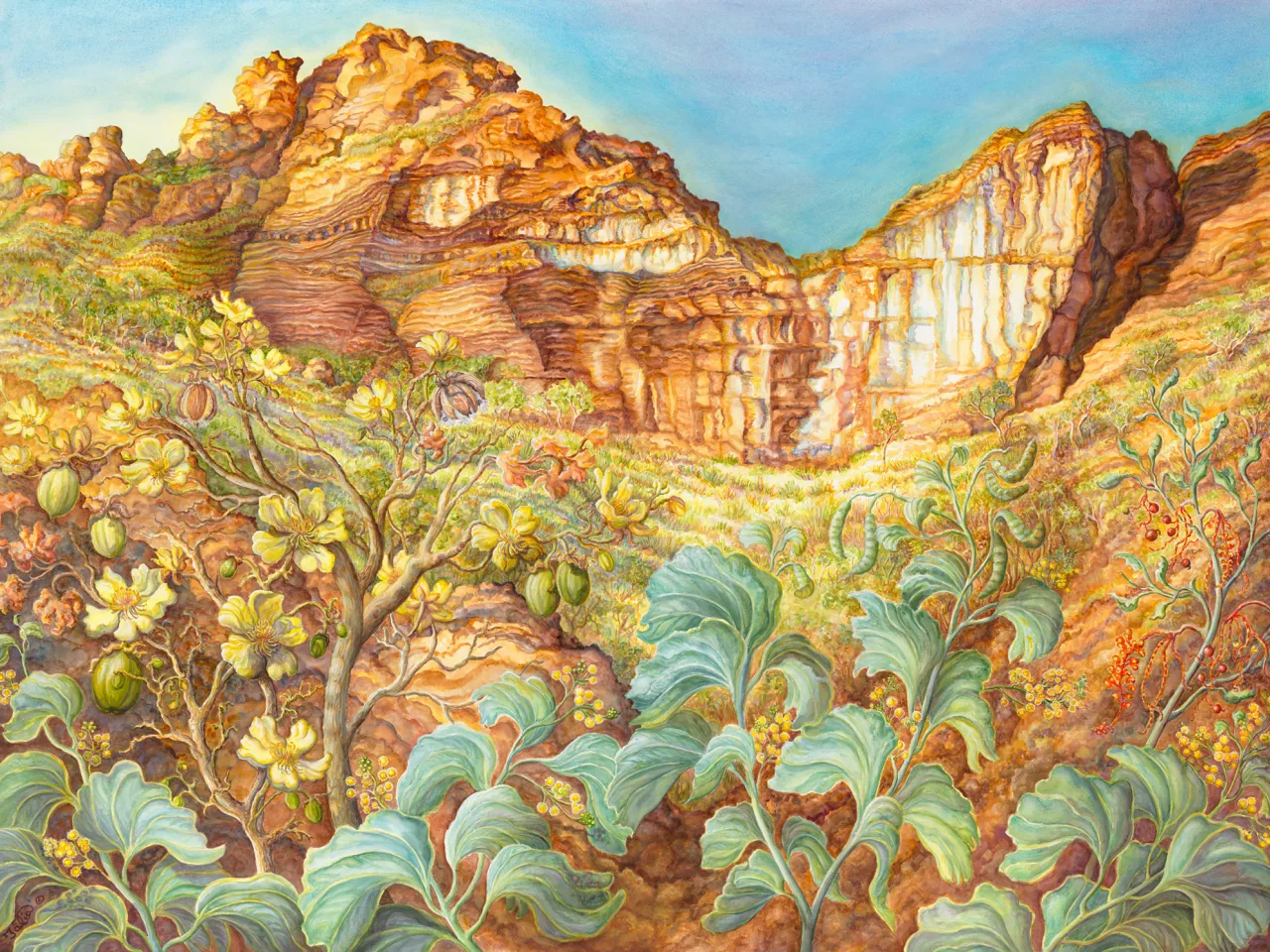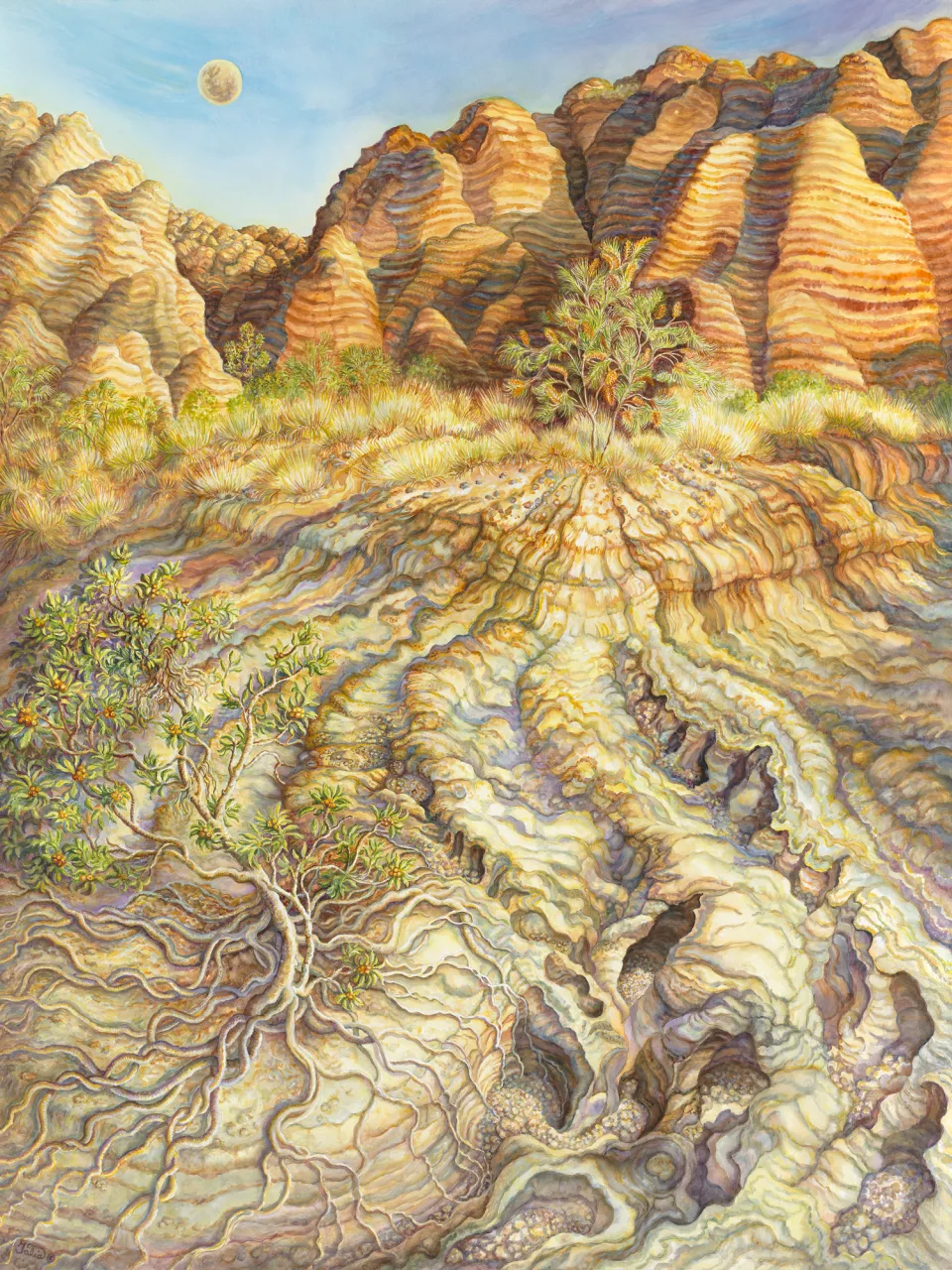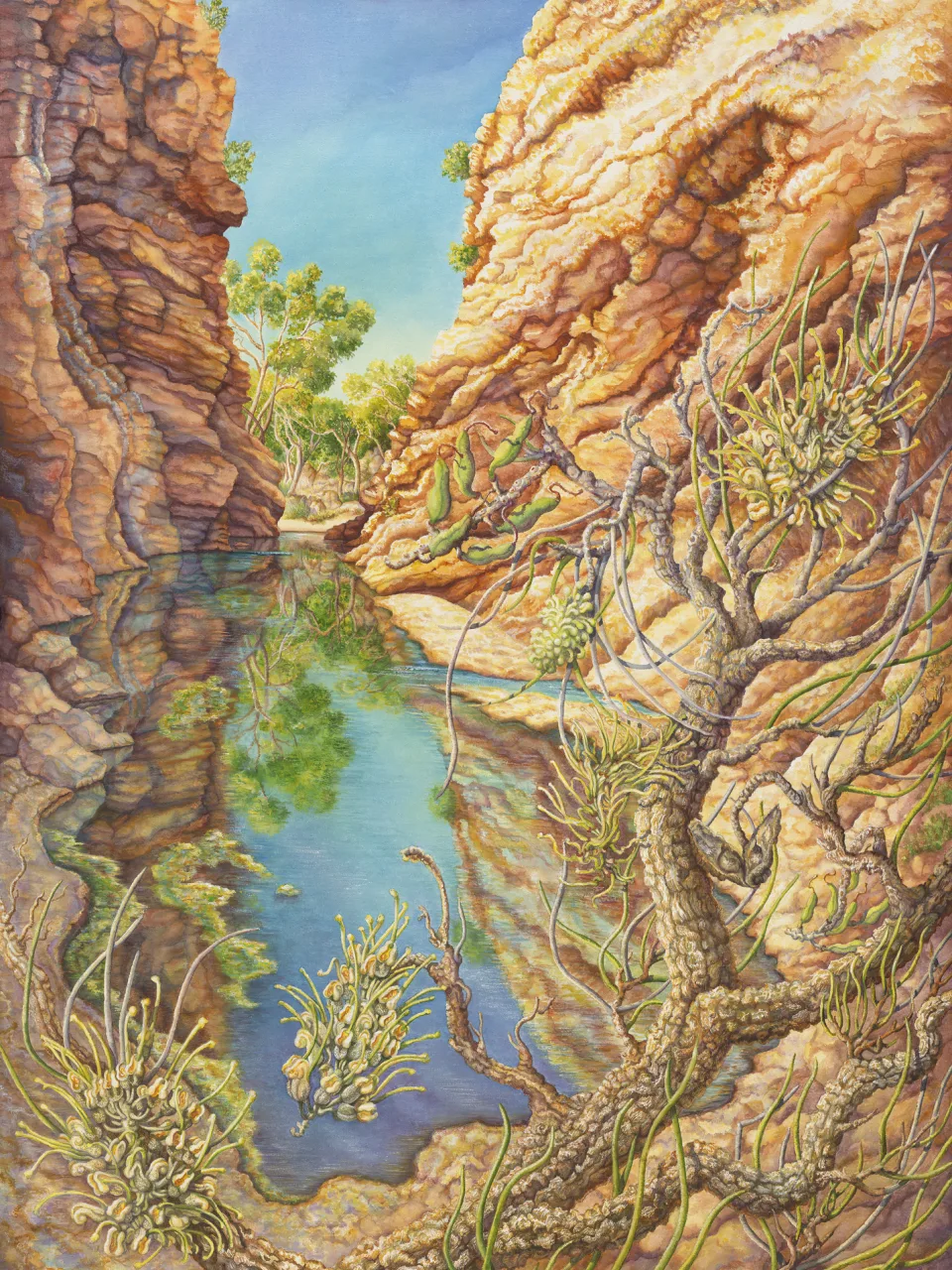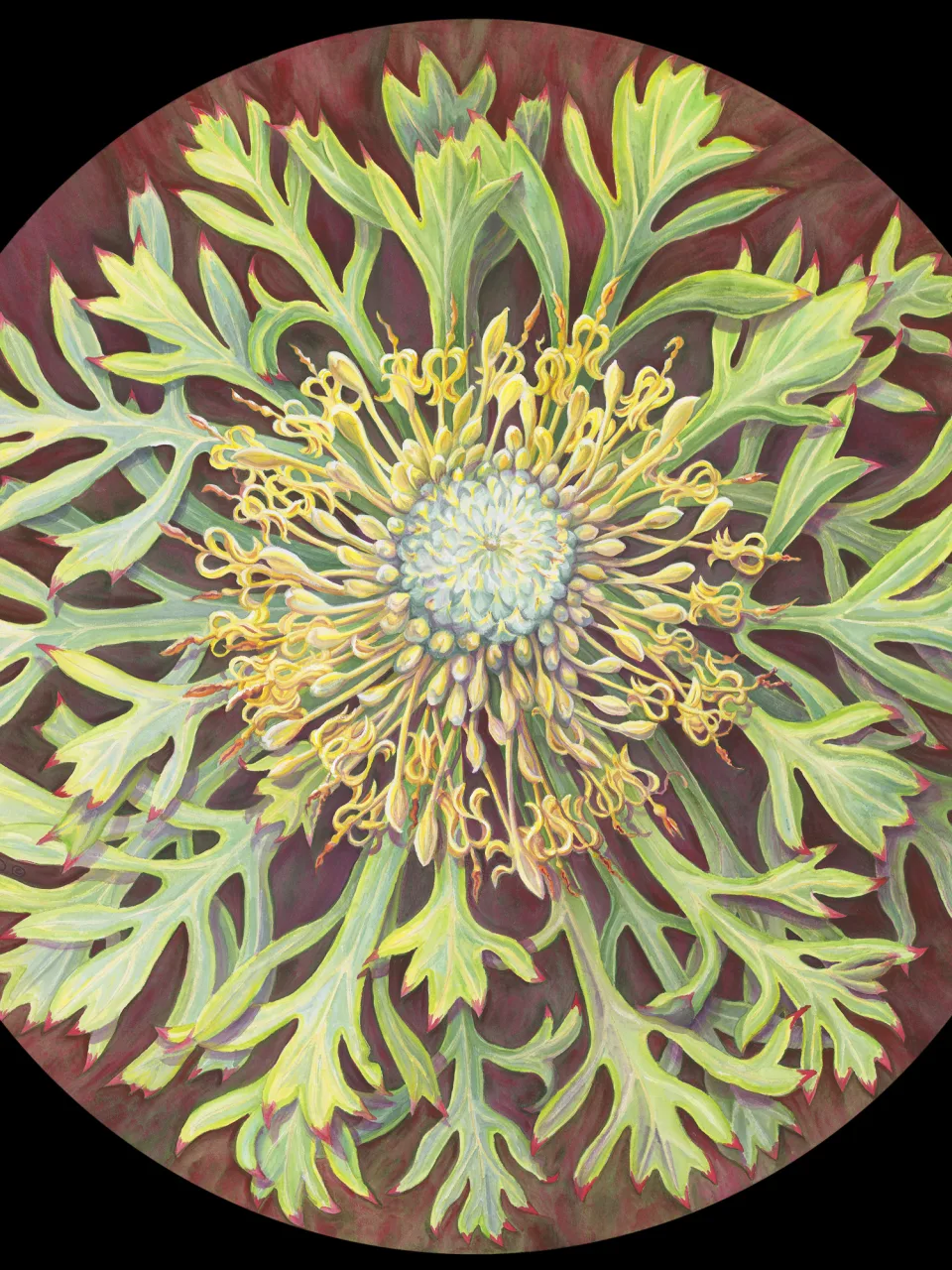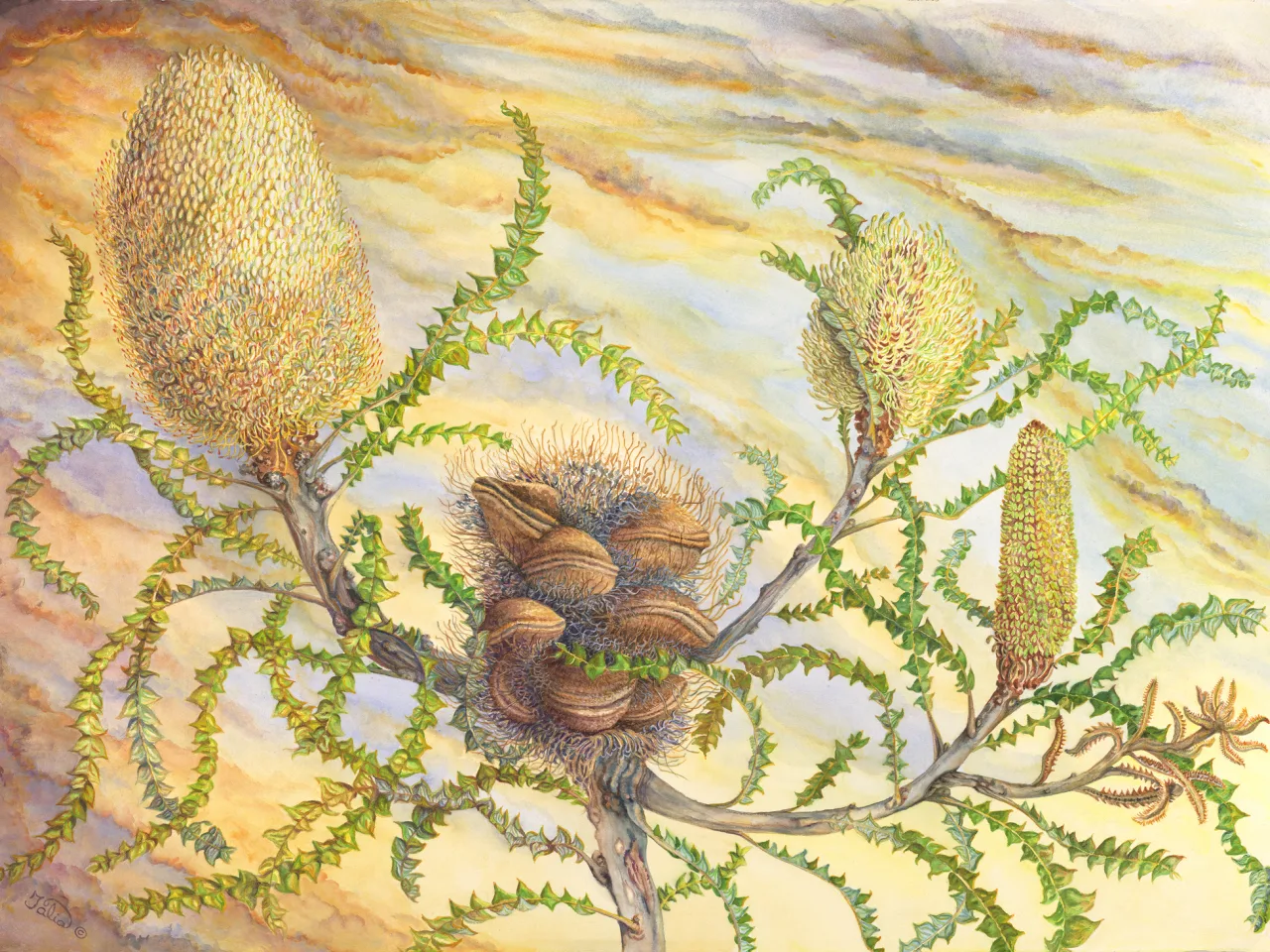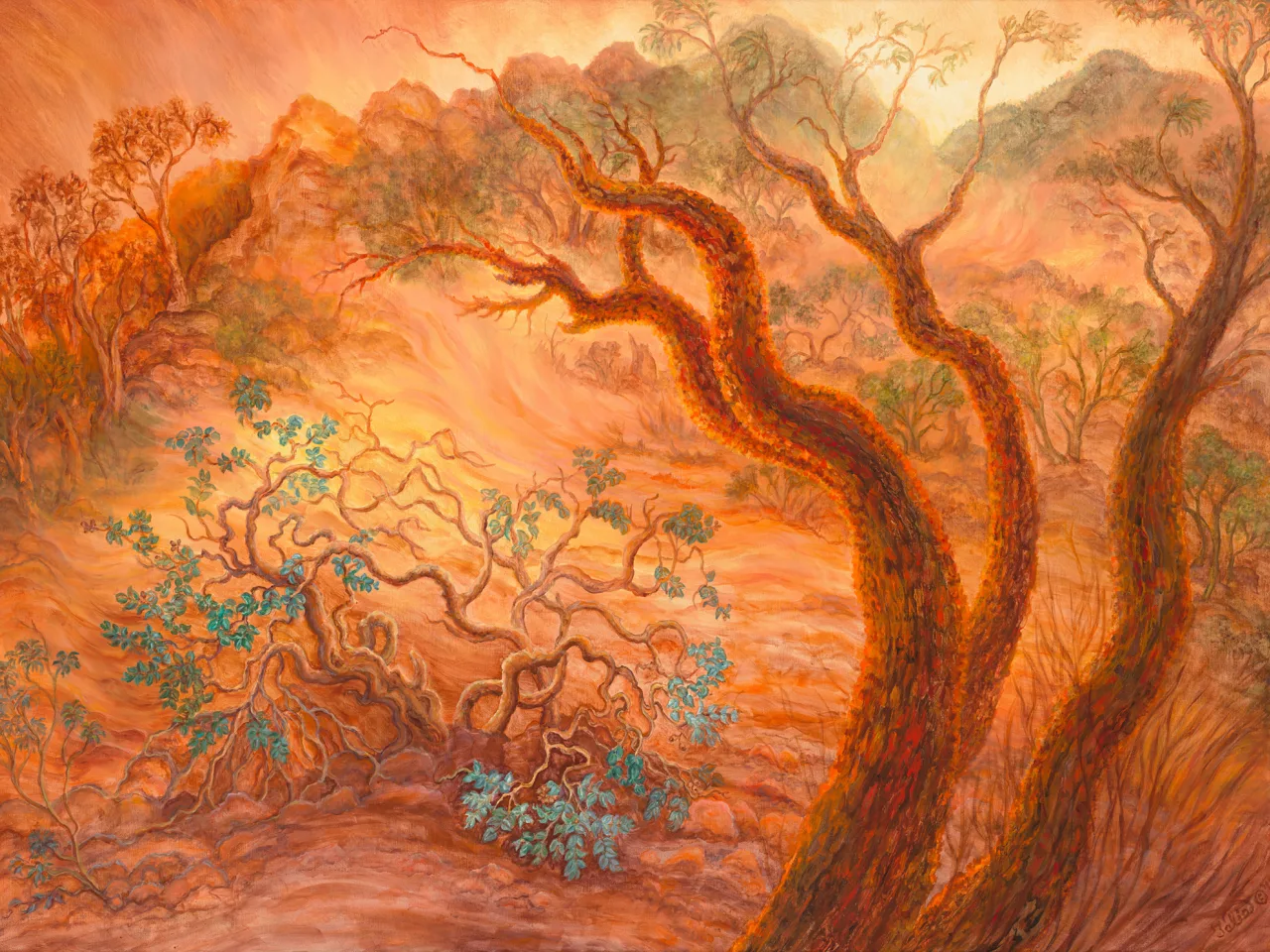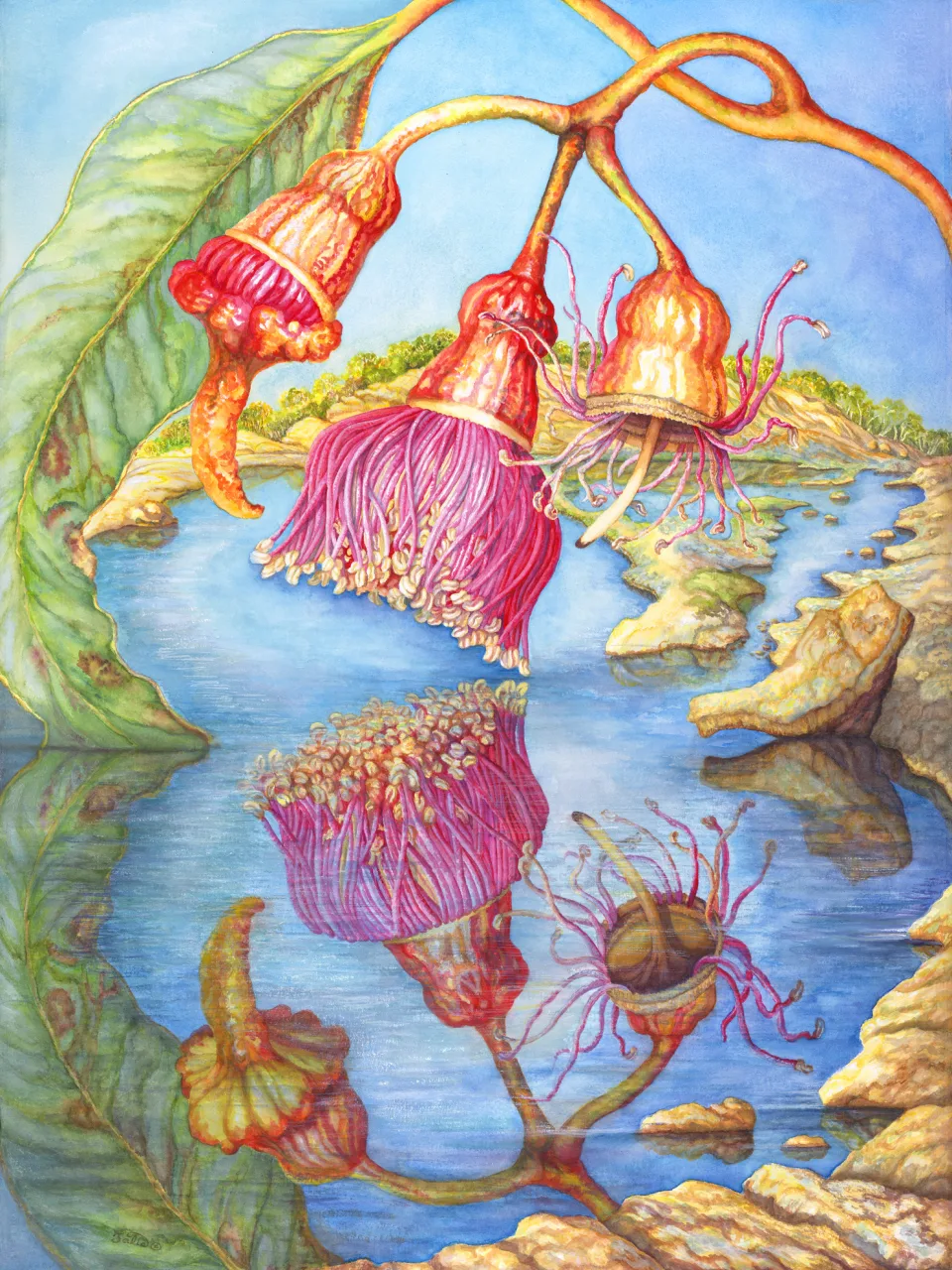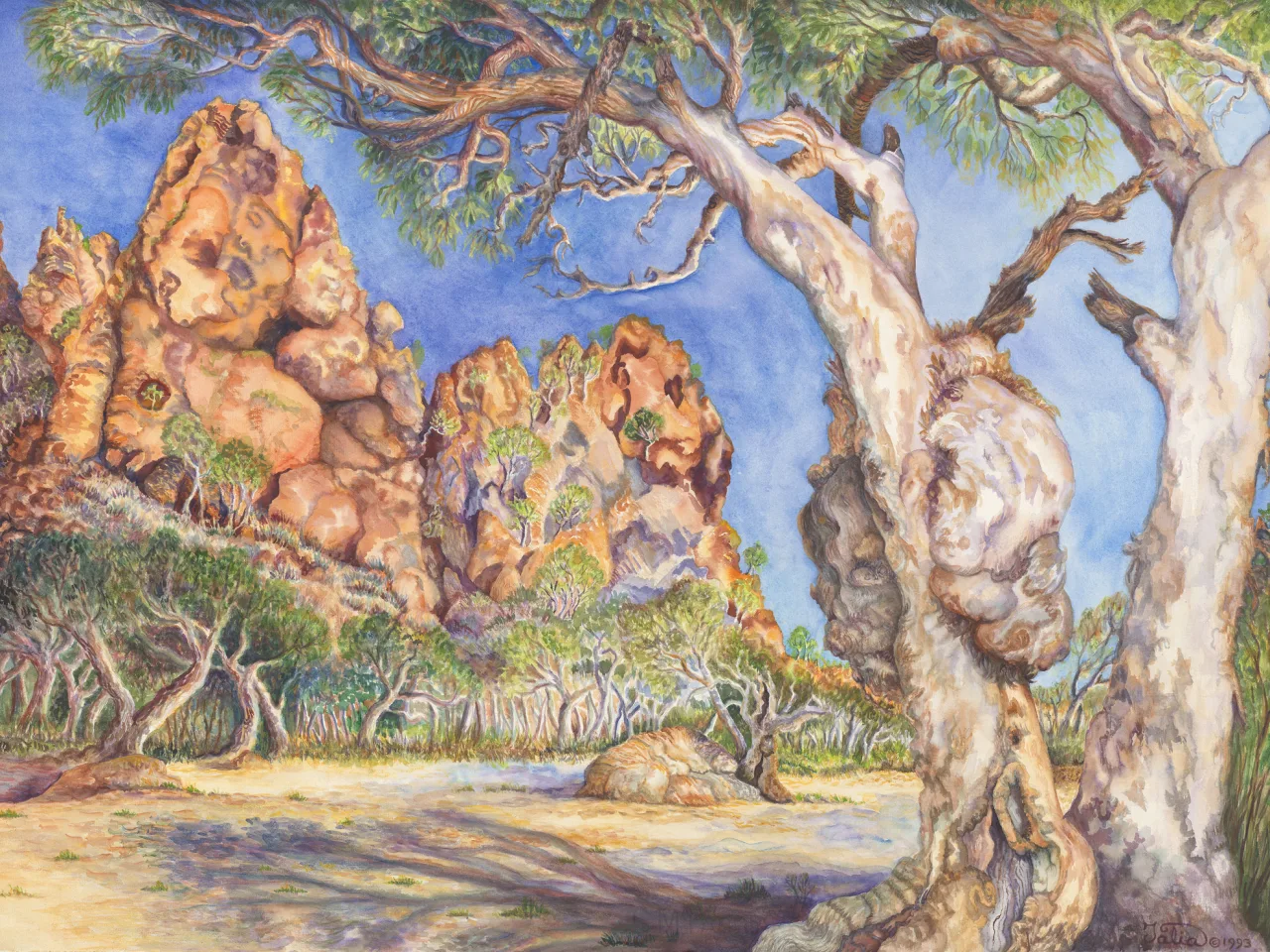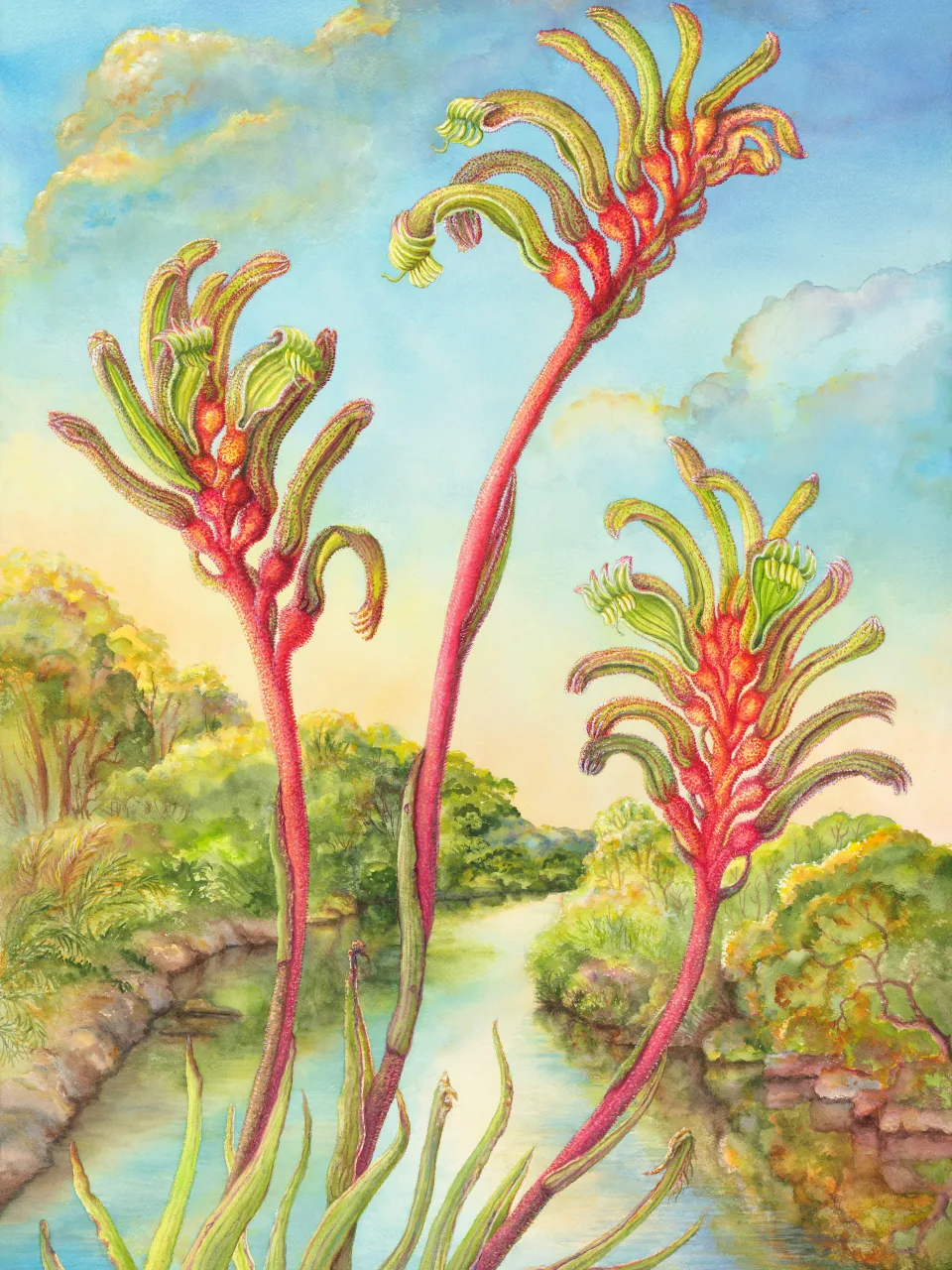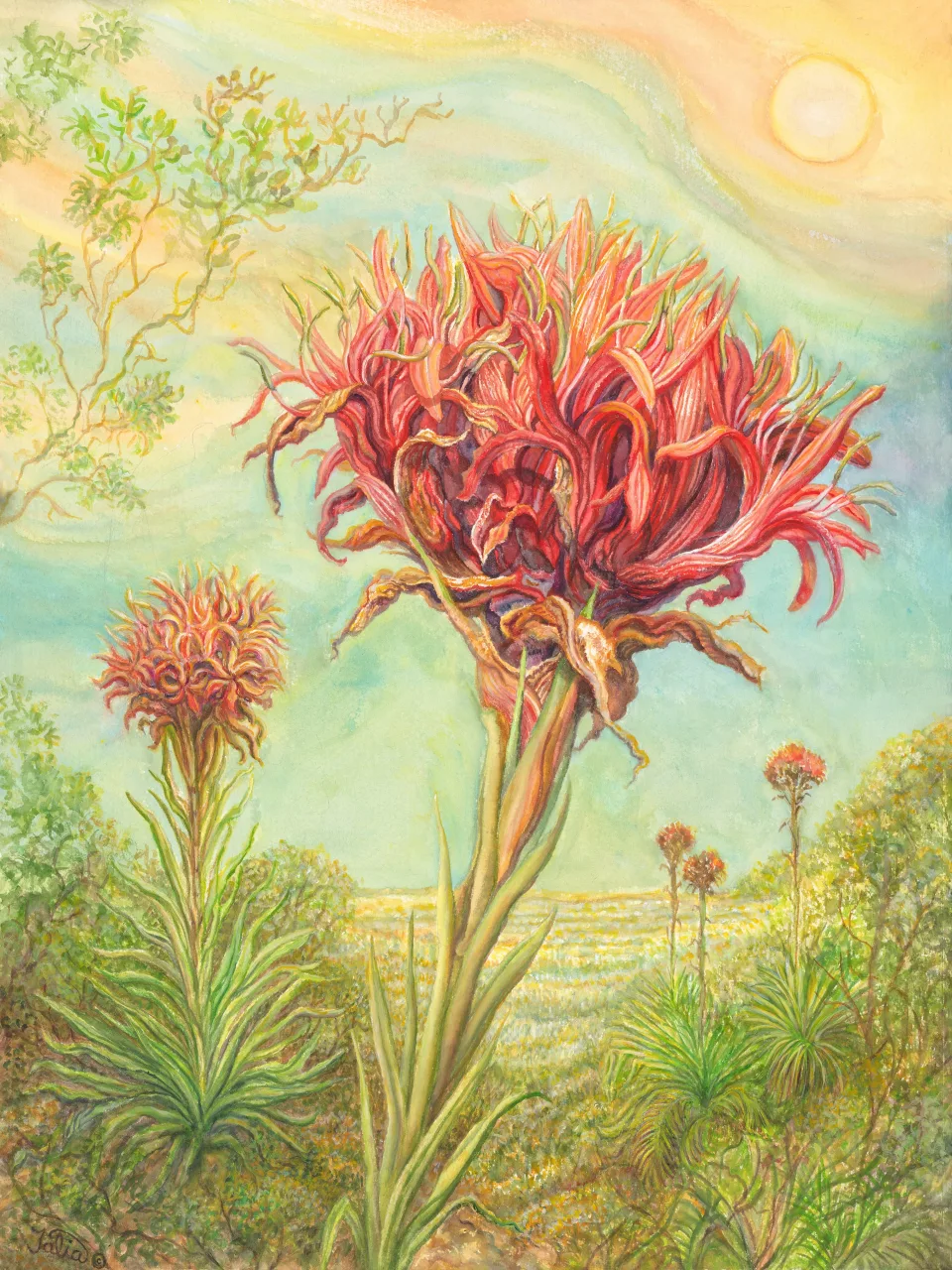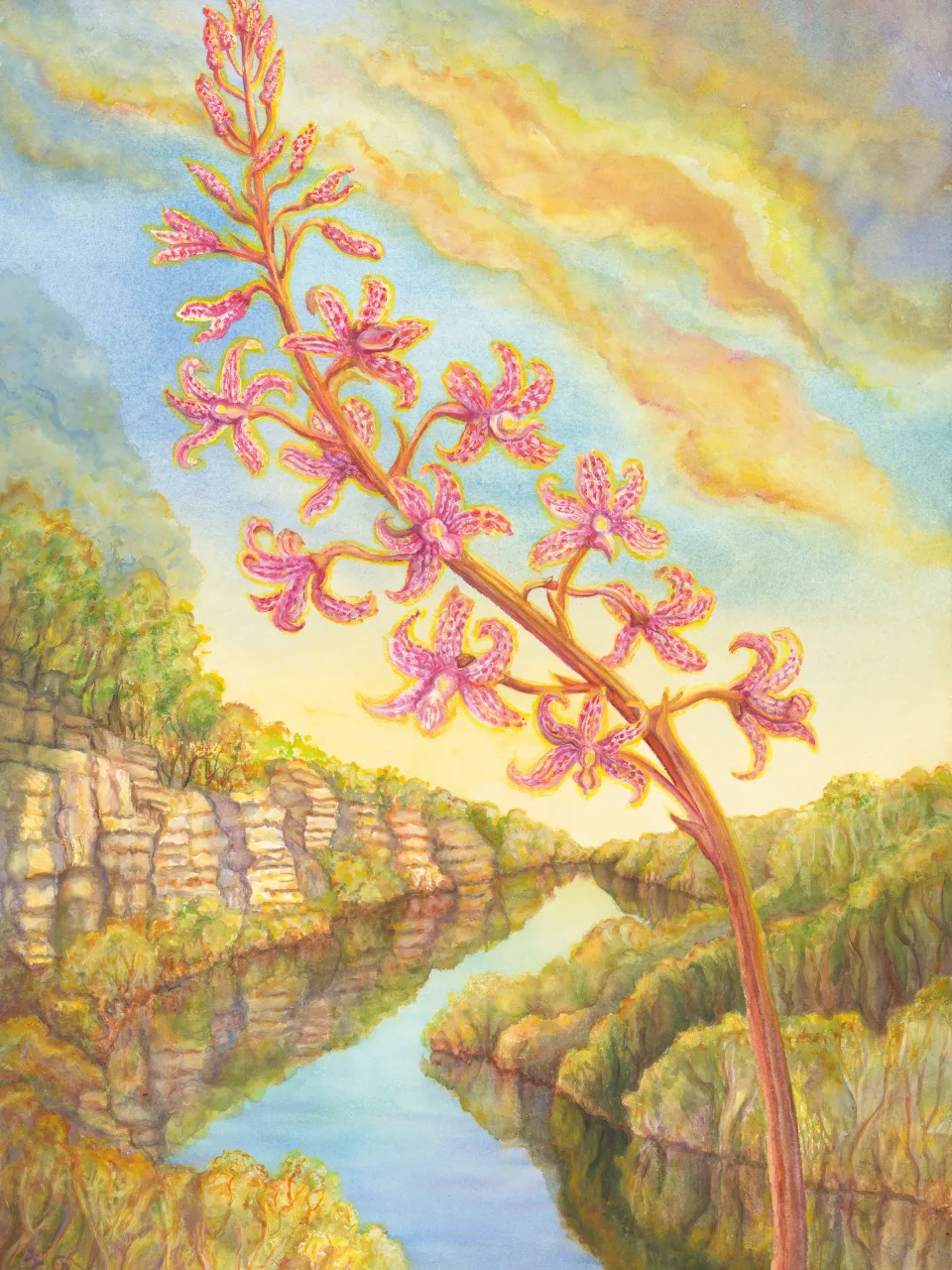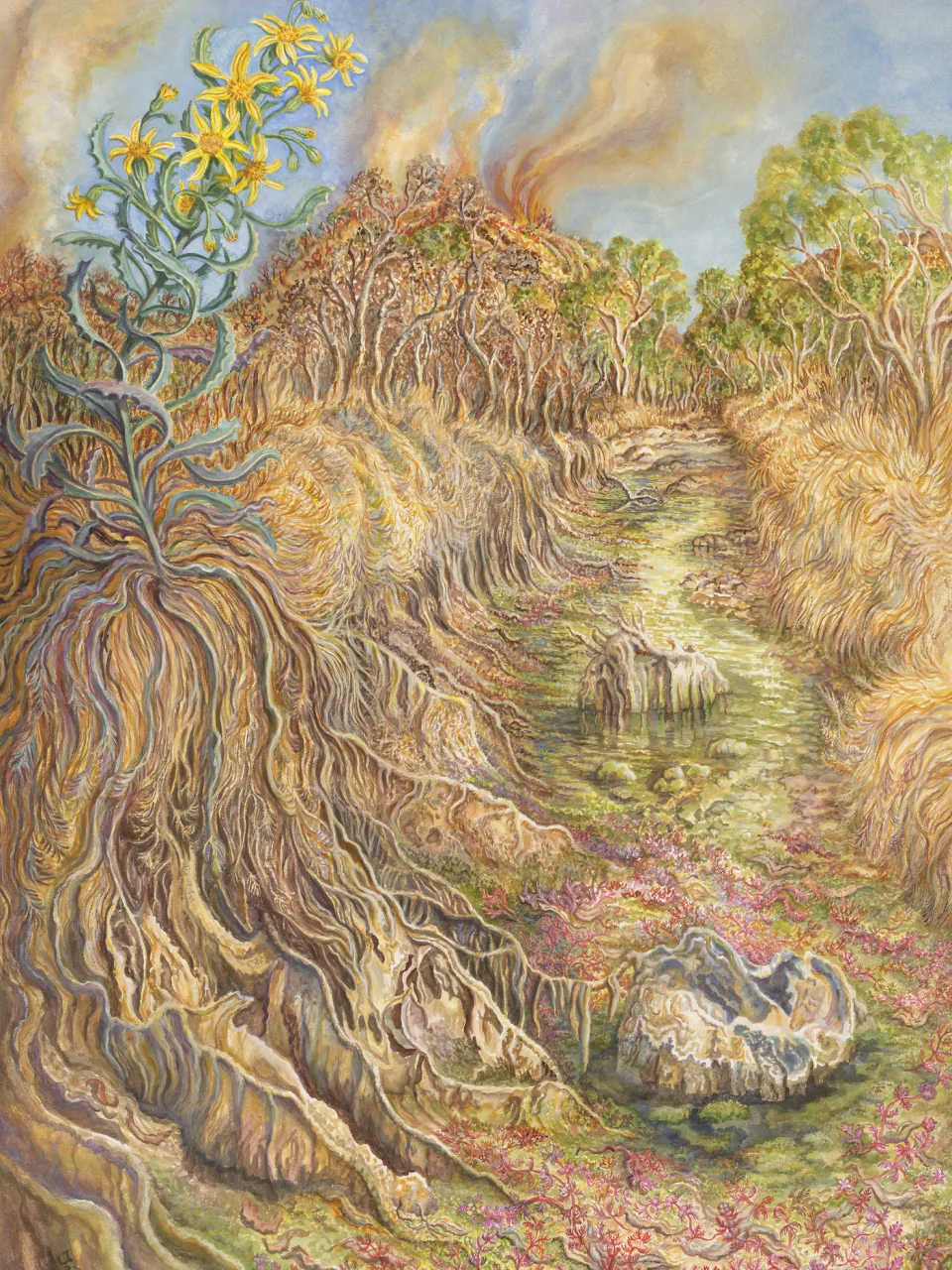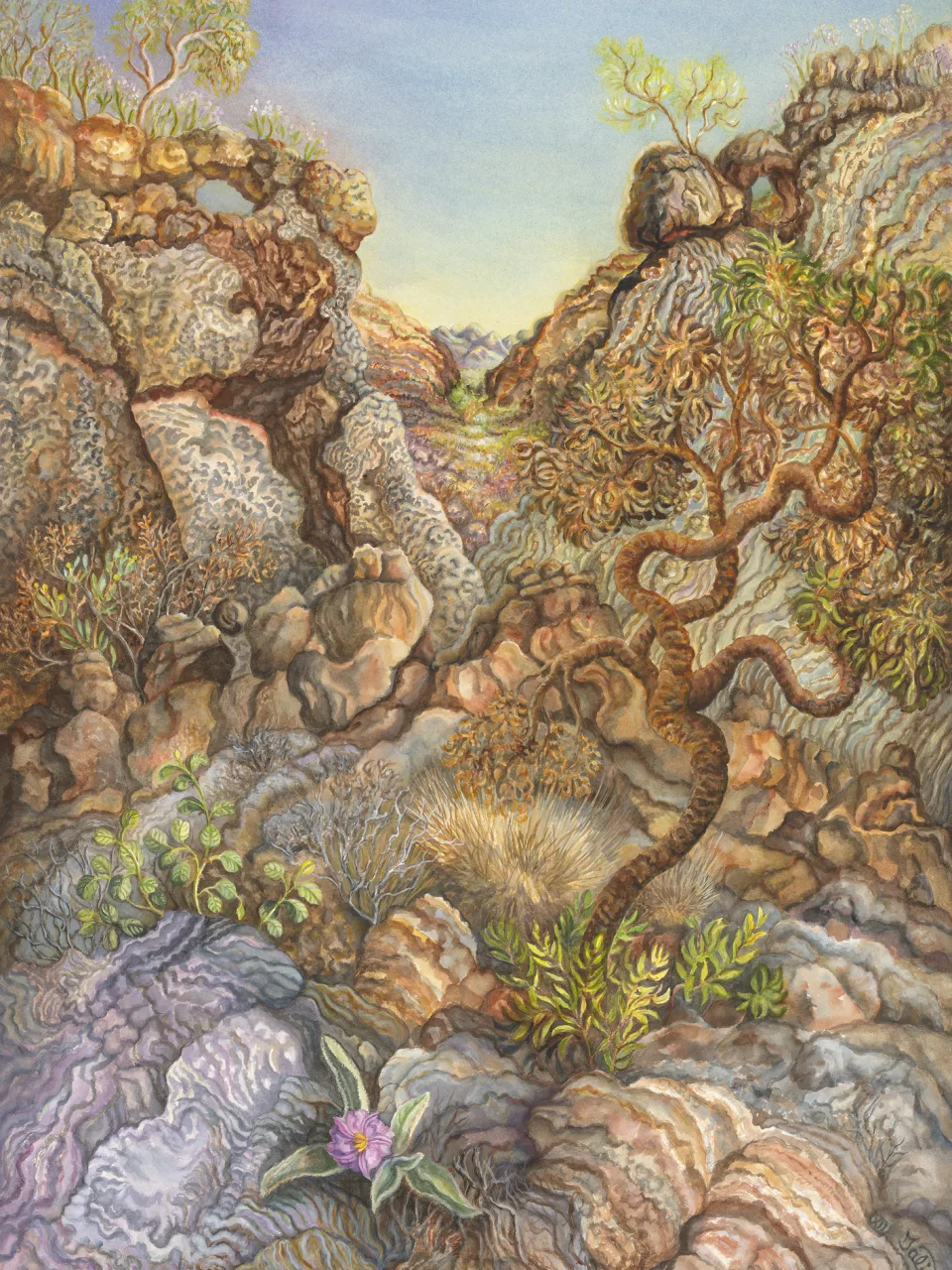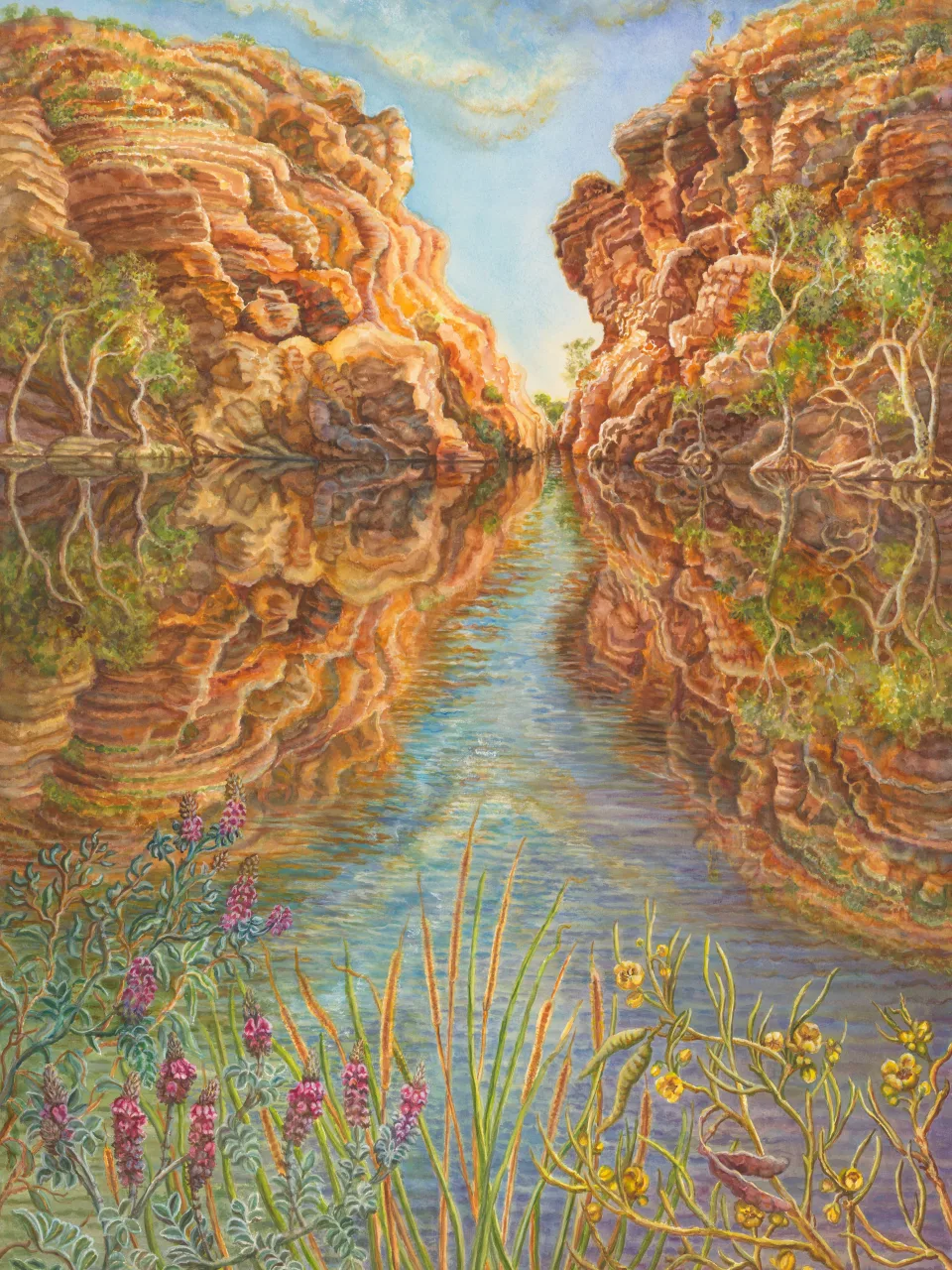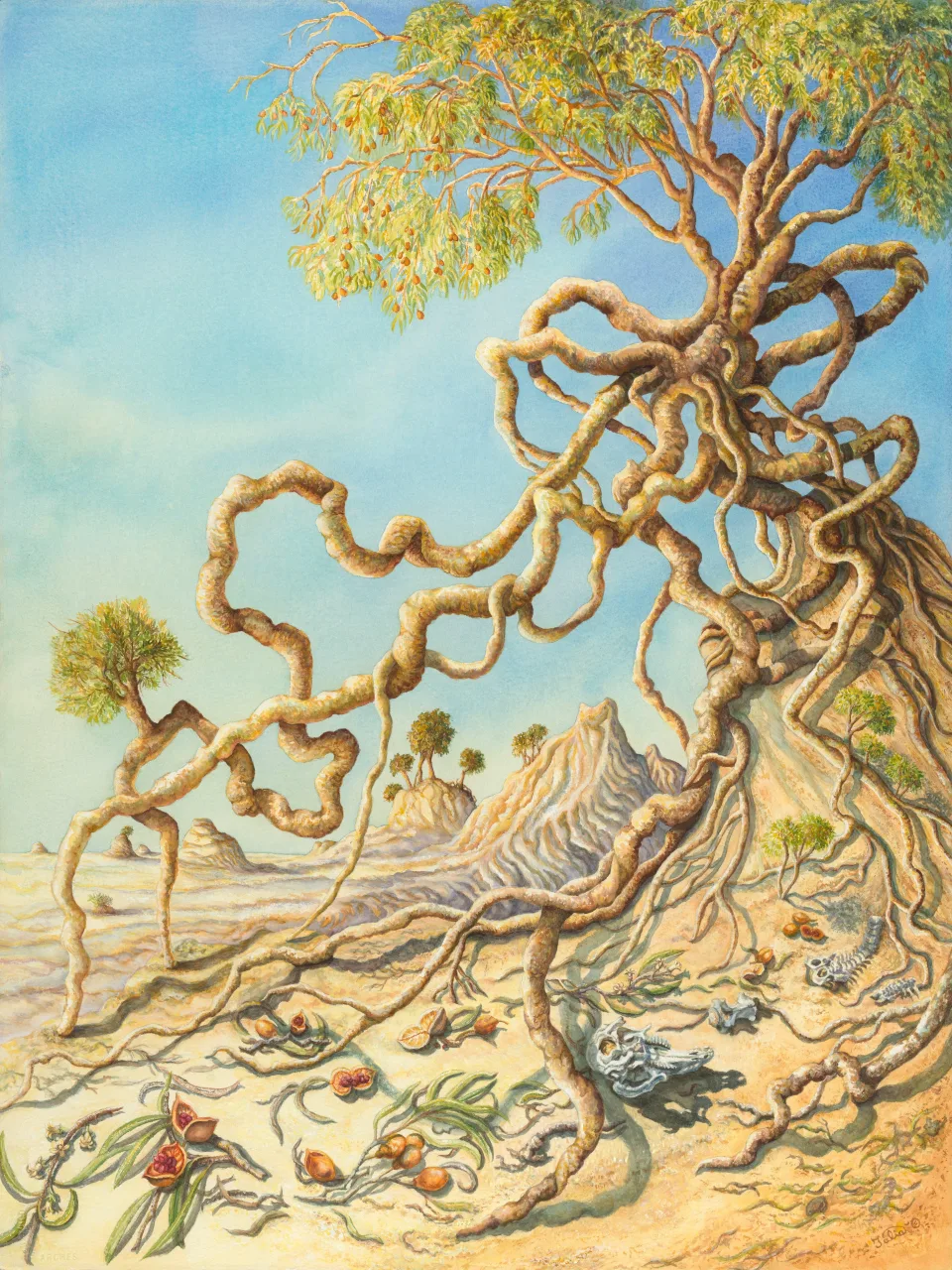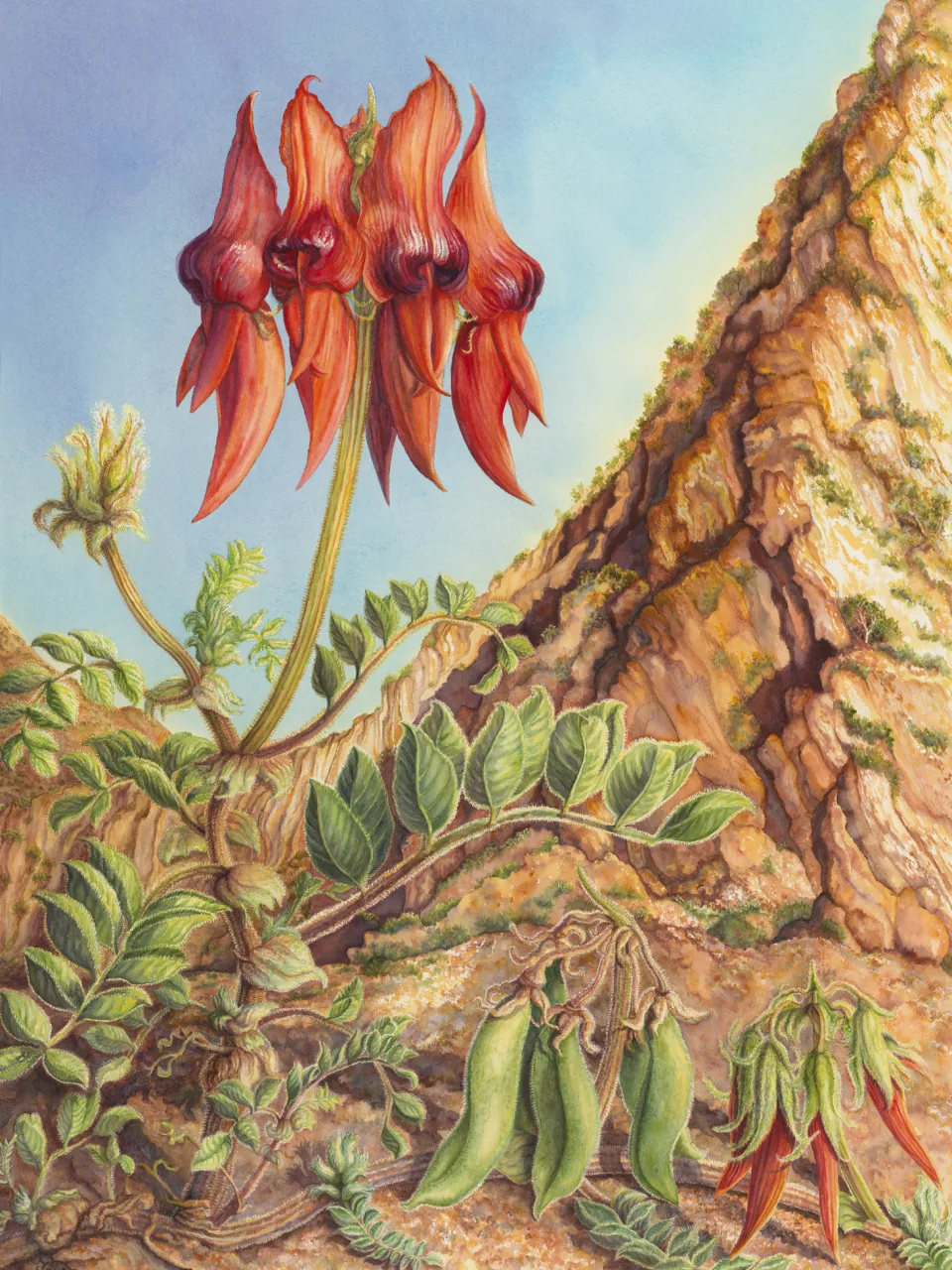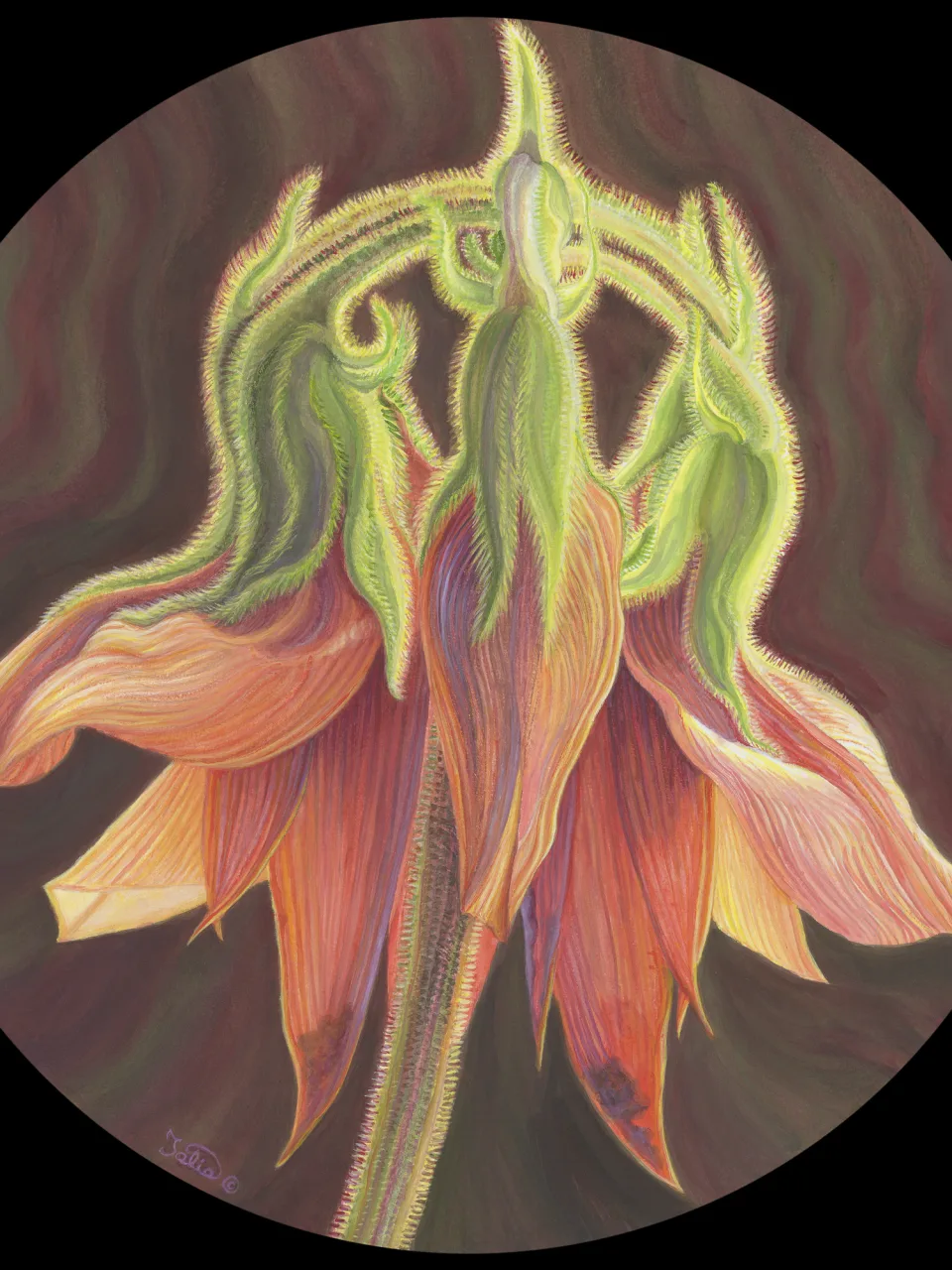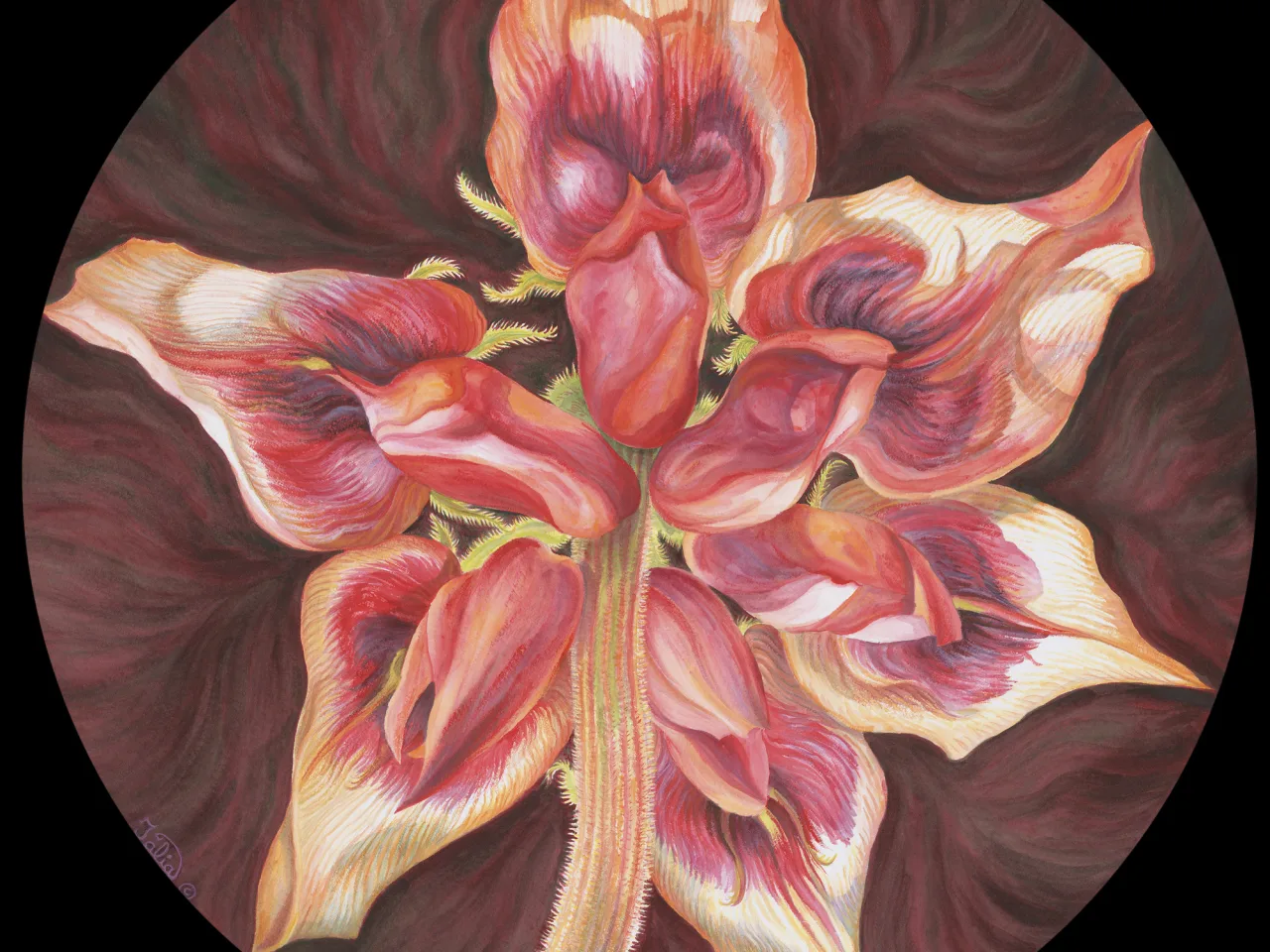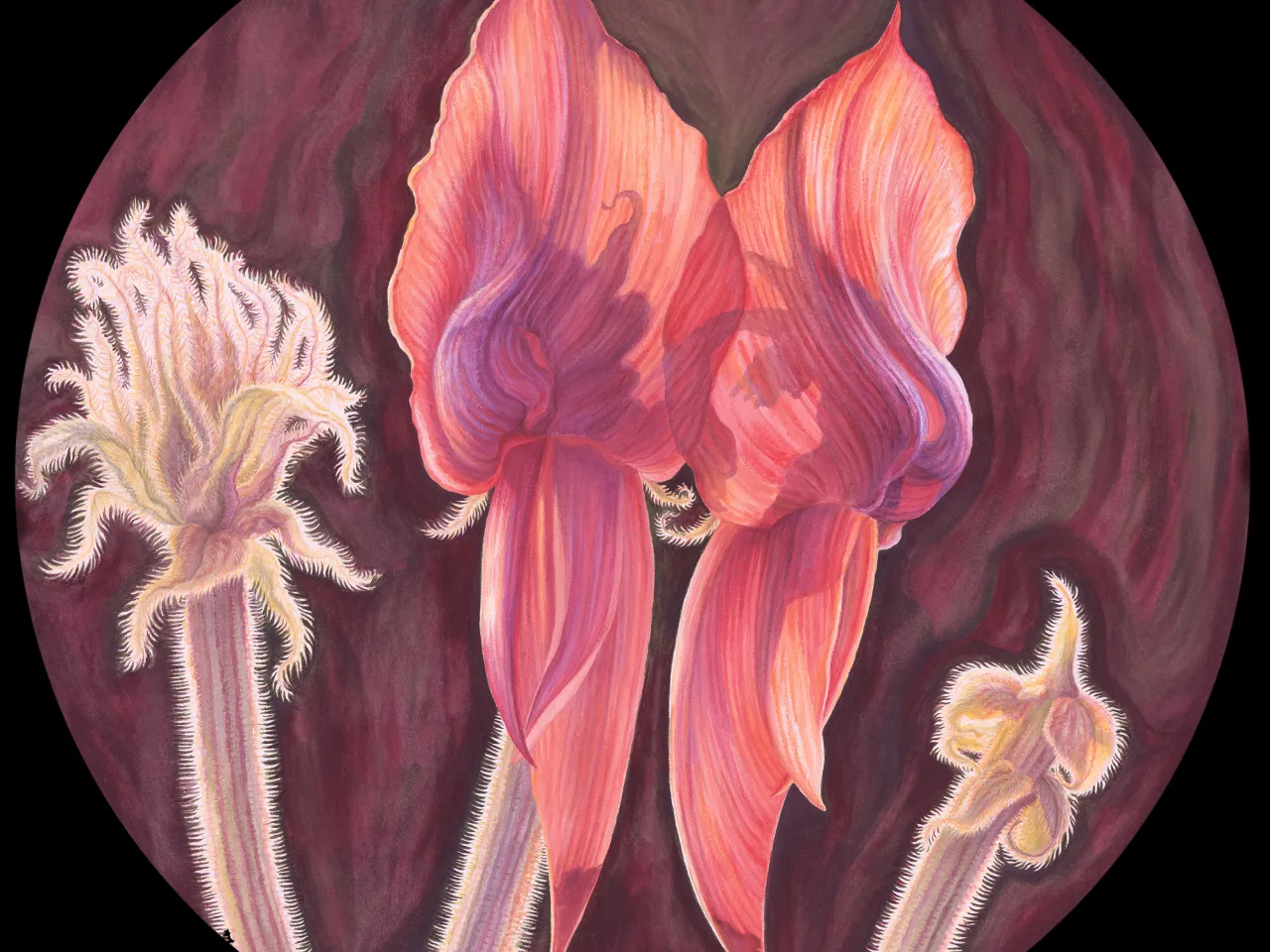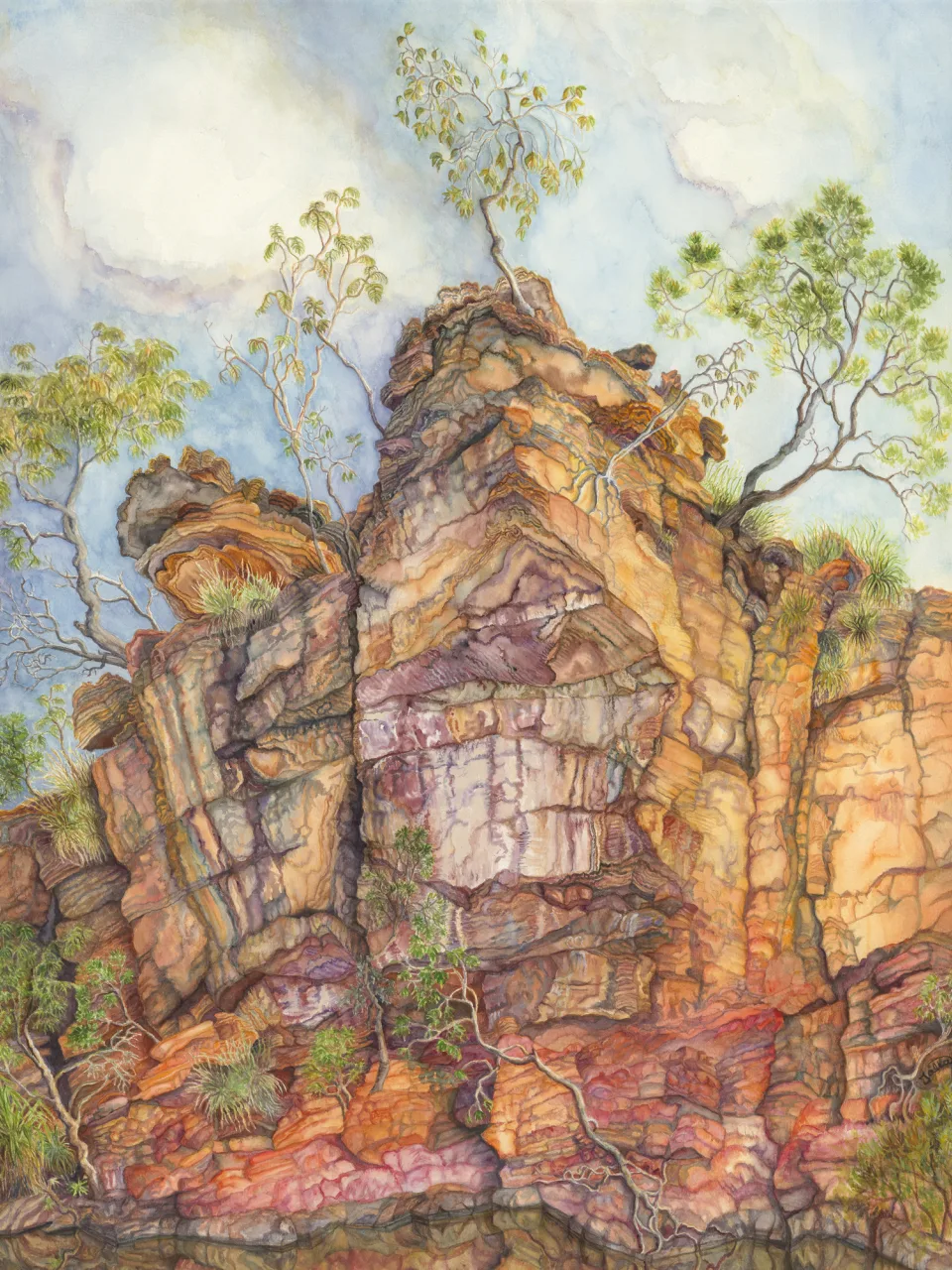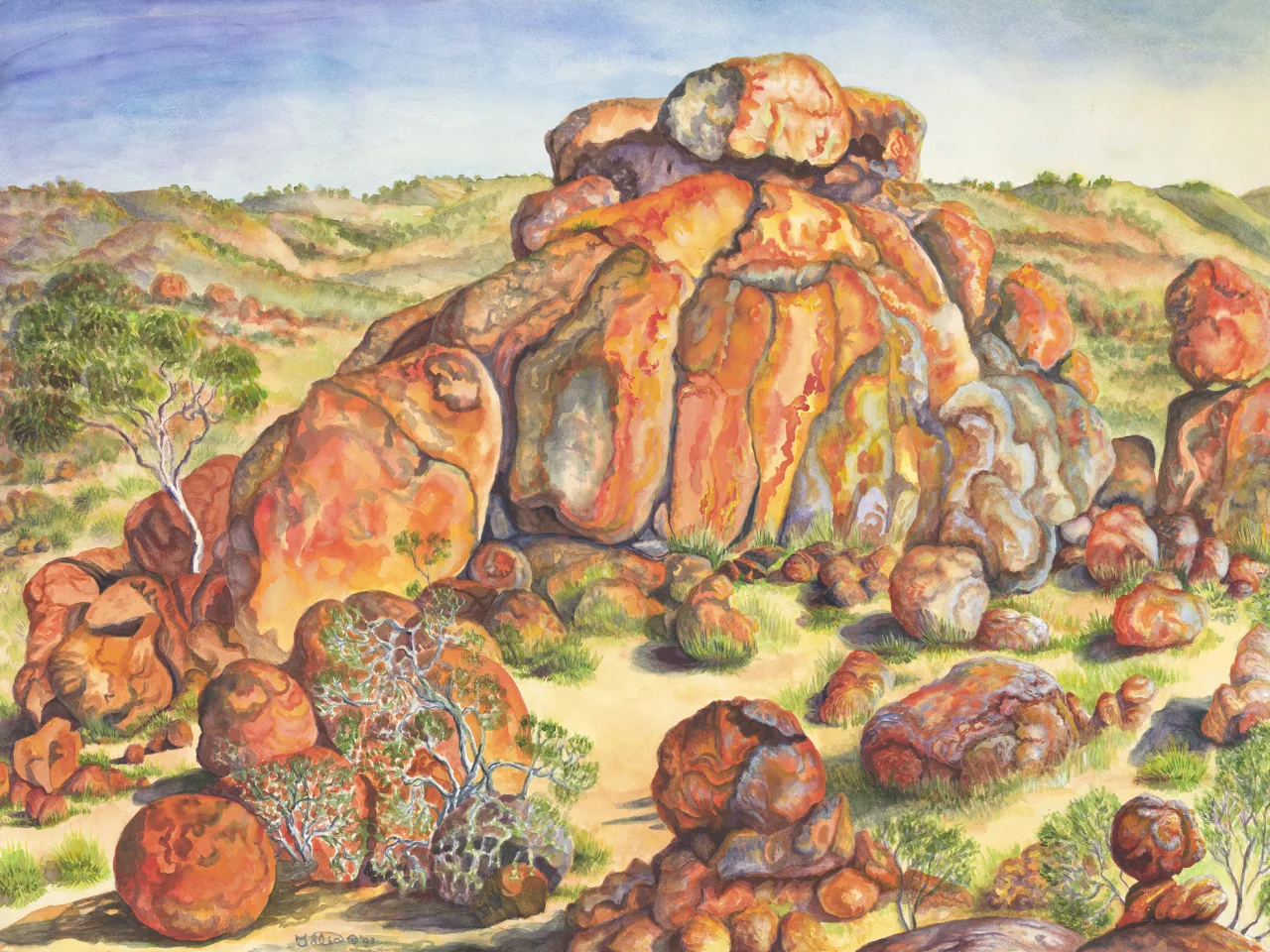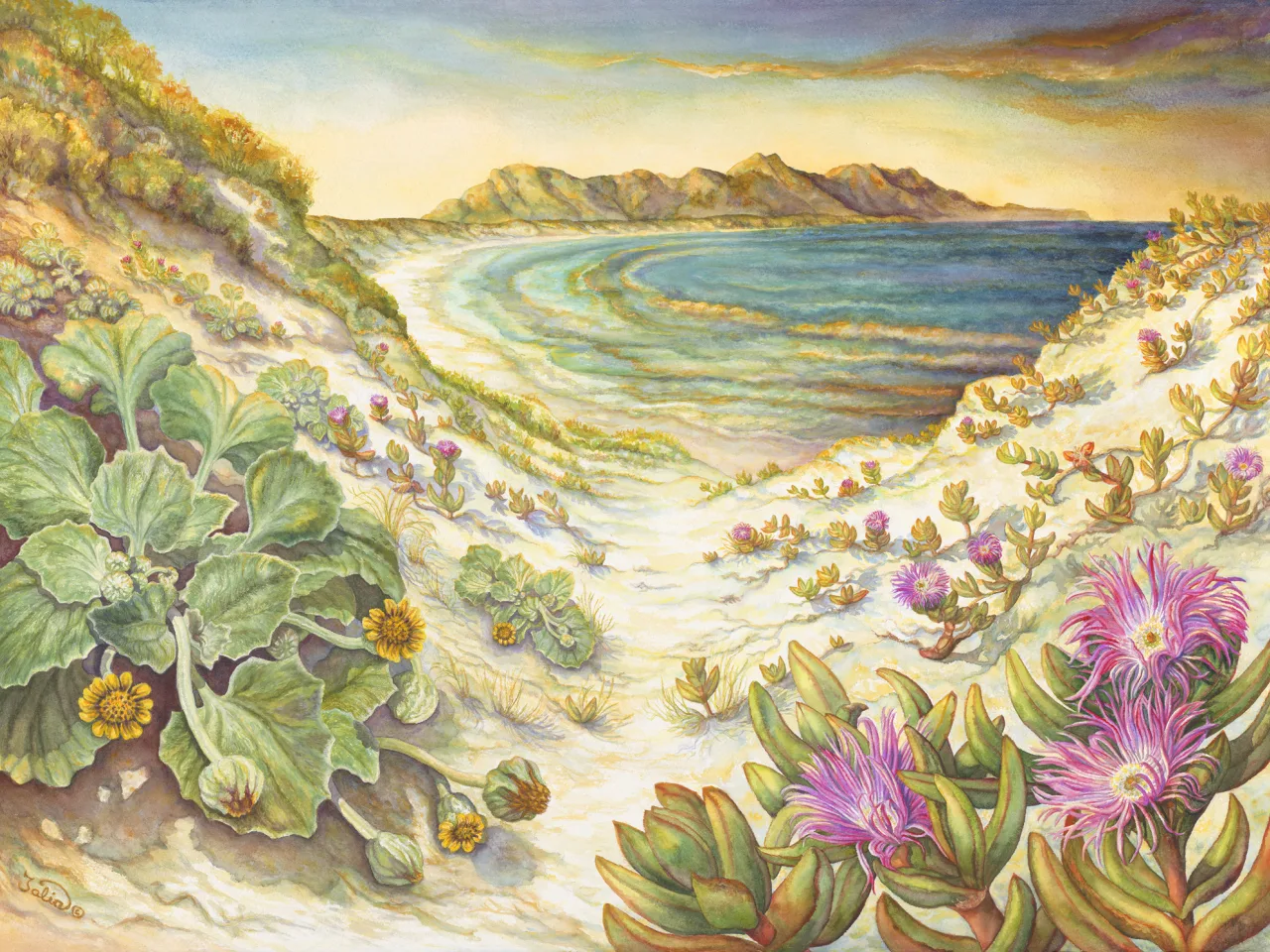Artwork 17 And Down the Dim Gorges—Wollemia nobilis
Section 12
More Southern Conifers—The Araucarians
Wollemi National Park, New South Wales, New South Wales
- 1. Wollemia nobilis (Wollemi pine)
Artwork 17
Buy a print
Limited edition giclee archival quality print on 310 gsm Ilford cotton rag (from an original work in watercolour on watercolour paper, 76 cm high x 56 cm wide)
from the artist
A “living fossil”, the Wollemi pine was discovered in a deep canyon in remote Wollemi National Park north of Sydney in 1994. It was not only a new species of tree, but ended up with a whole genus to itself, and was assigned to the ancient Araucariaceae family. Ancestors of this family date back in time to before the Jurassic Period, which lasted from 200–145 mya, and is best known as the time when dinosaurs first set foot on the Earth. Named after its discoverer, David Noble, who had abseiled into the canyon with bushwalking friends and recognised that these trees were unique, Wollemia nobilis created tremendous publicity and interest.
As the sandstone gorge system where four stands of trees have been discovered is sensibly kept secret, the gorge in this artwork is adapted from imagination and photos taken during a hiking trip to the Wollemi National Park. I wanted to convey the atmosphere of these “living fossils” with the rising Sun creeping into their hidden gorge.
The Wollemi pine is at least 120 million years old. Pollen that is very nearly identical to Wollemia nobilis pollen has been discovered in many locations in Australia including the Northern Territory, Tasmania, and Western Australia, and also in New Zealand and Antarctica. Somehow the species survived freezing and burning in the advancing and retreating ice ages, severe reductions in rainfall, and lava flows which rendered its canyon uninhabitable until a tiny creek had eroded its way through the basalt cap to the sandstone beneath about 40 mya, enabling plants to gain a foothold (Woodford, 2005/2007).
I haunted the Adelaide Botanic Garden to observe, sketch, and photograph its then sole specimen as it grew, and this is the main featured tree in my painting. It was about 3 m tall when measured for the drawing in 2010, and had been growing for over 5 years. Male and female cones appear together on the tree, with spiky, rounded female seed cones on high branches and finger-like male cones on lower branches. The distinctive “bubbly bark” on the trunk was partly hidden by coppices (new trees sprouting from the base) as well as new leaves popping out along the trunk at irregular intervals (epicormic stems).




